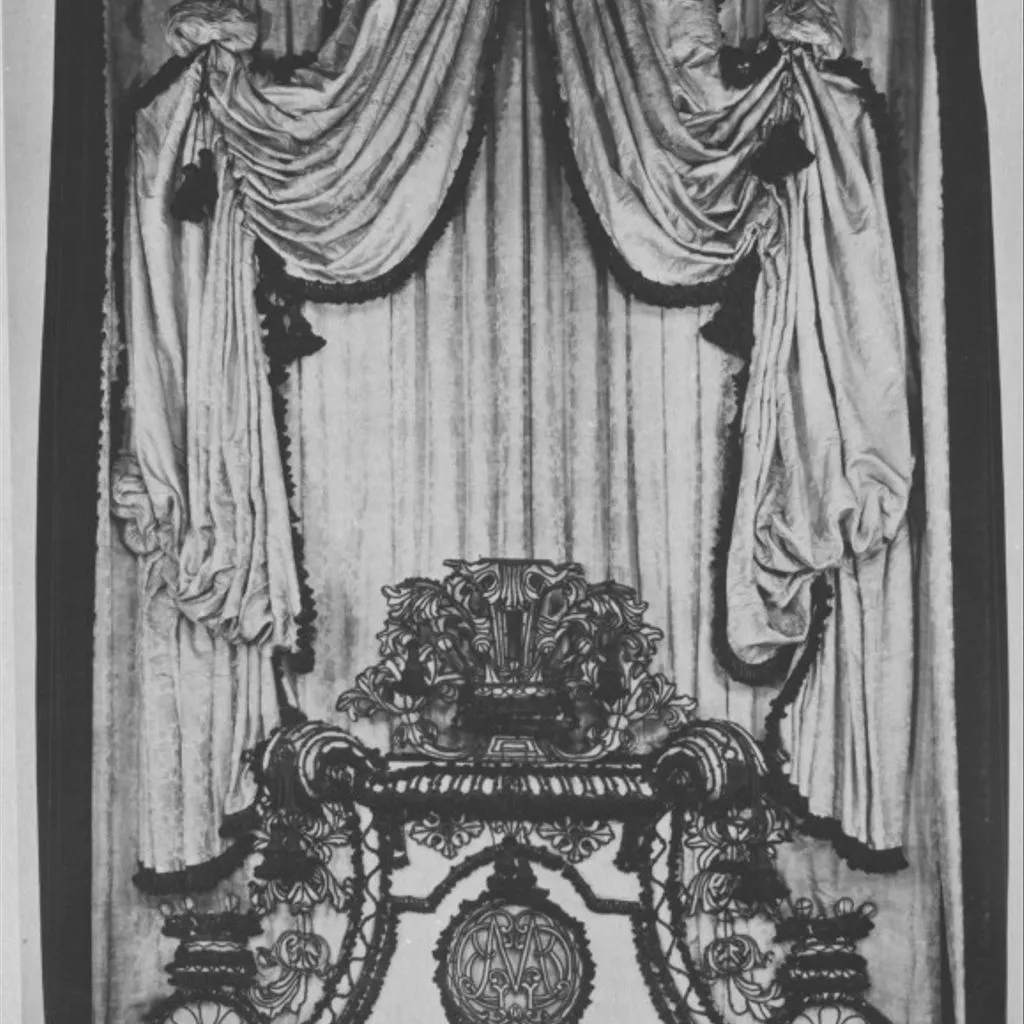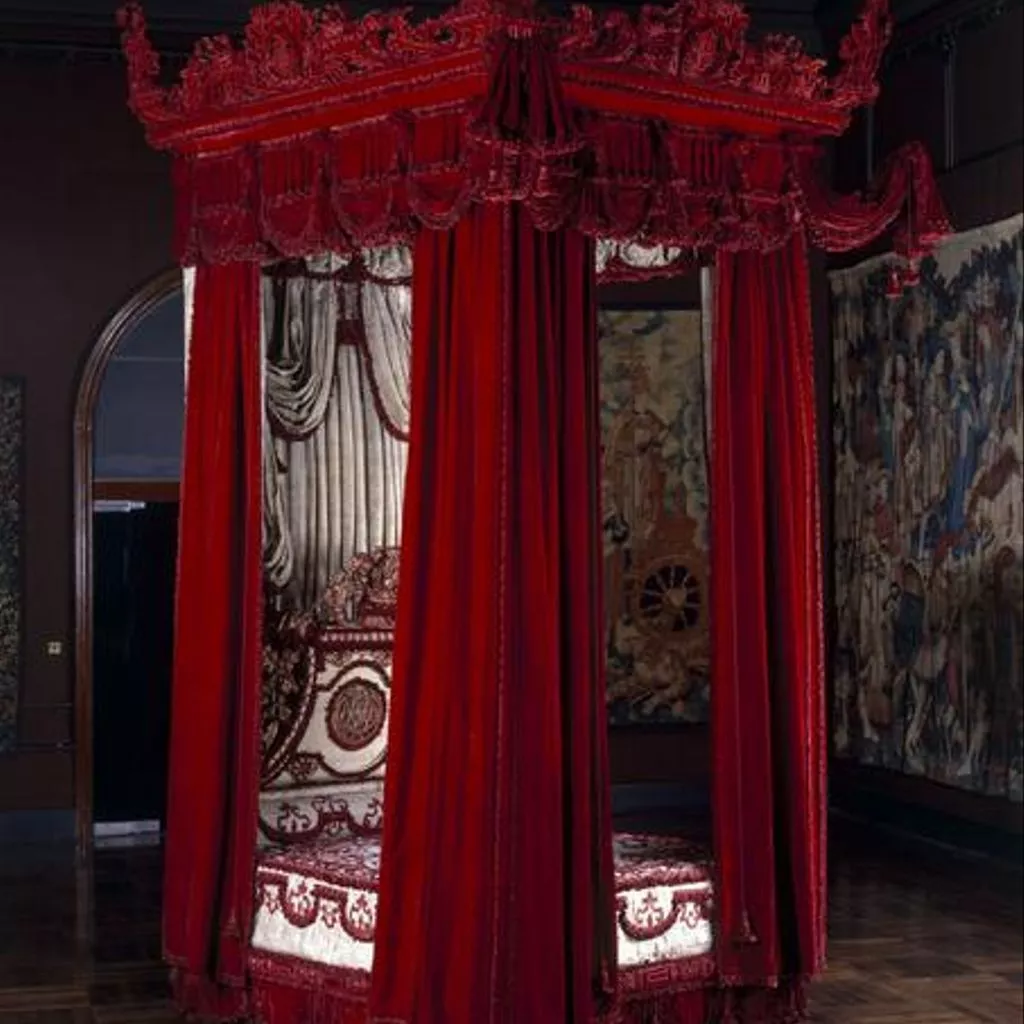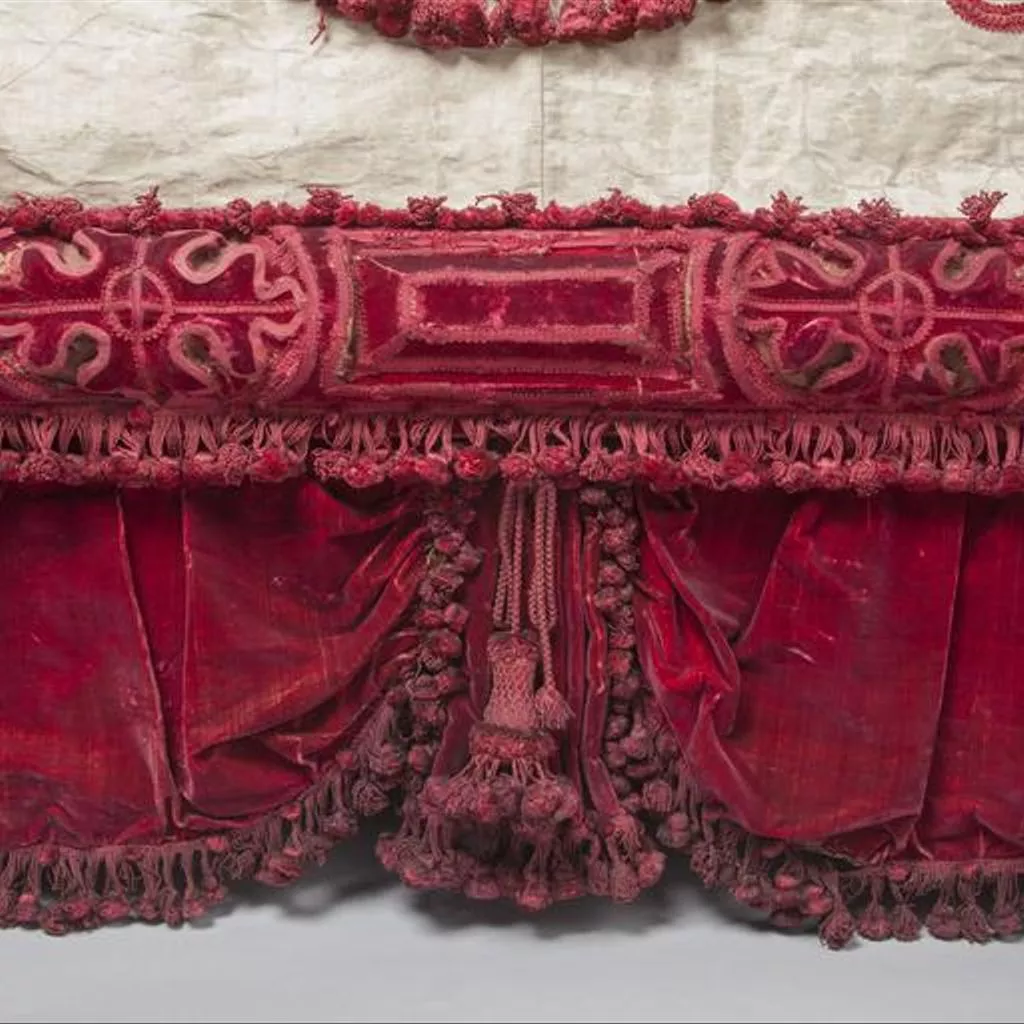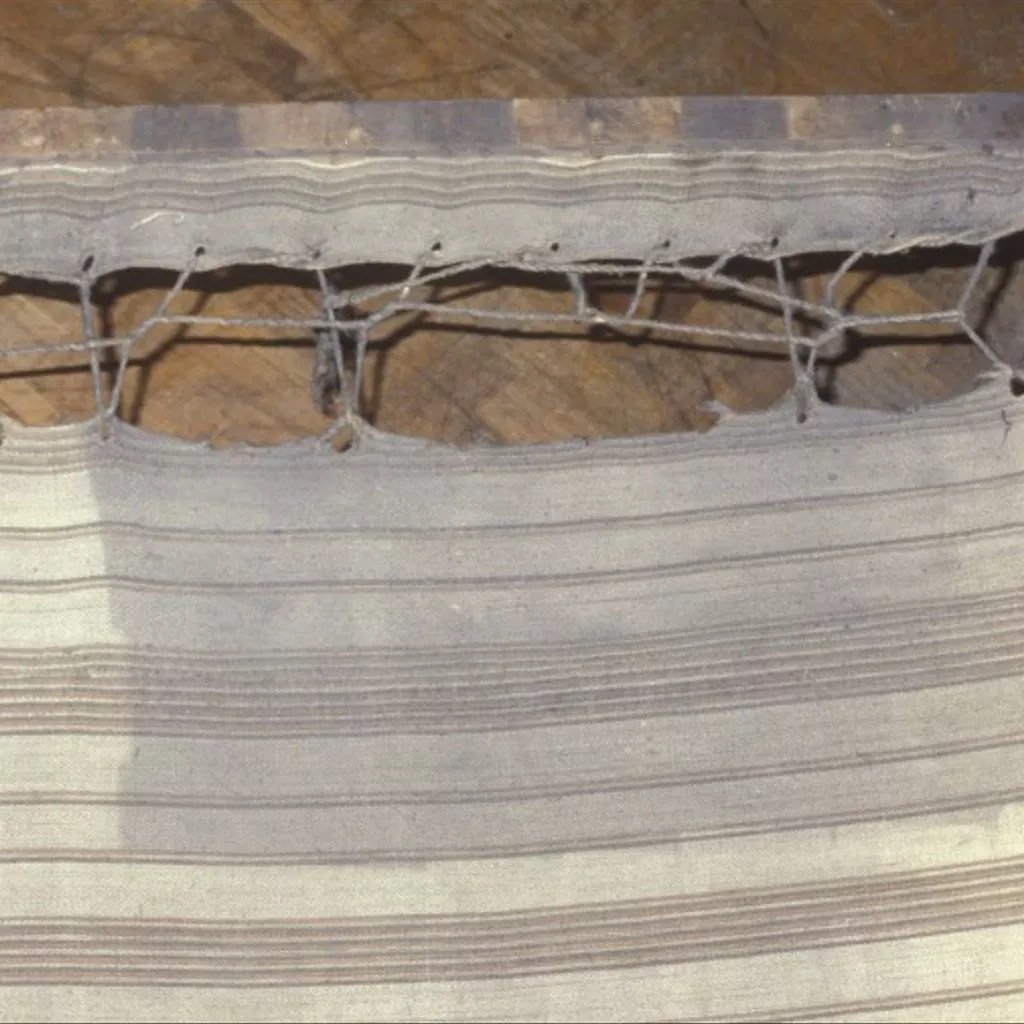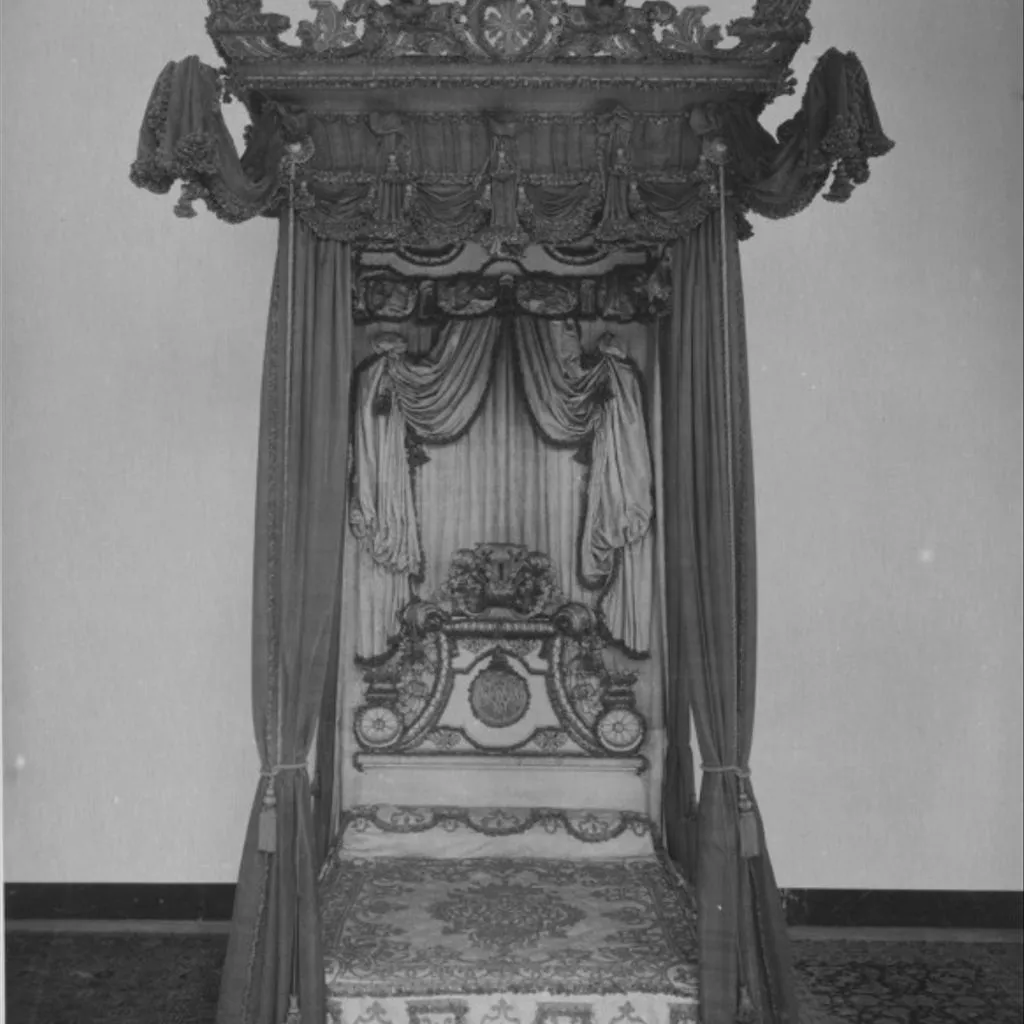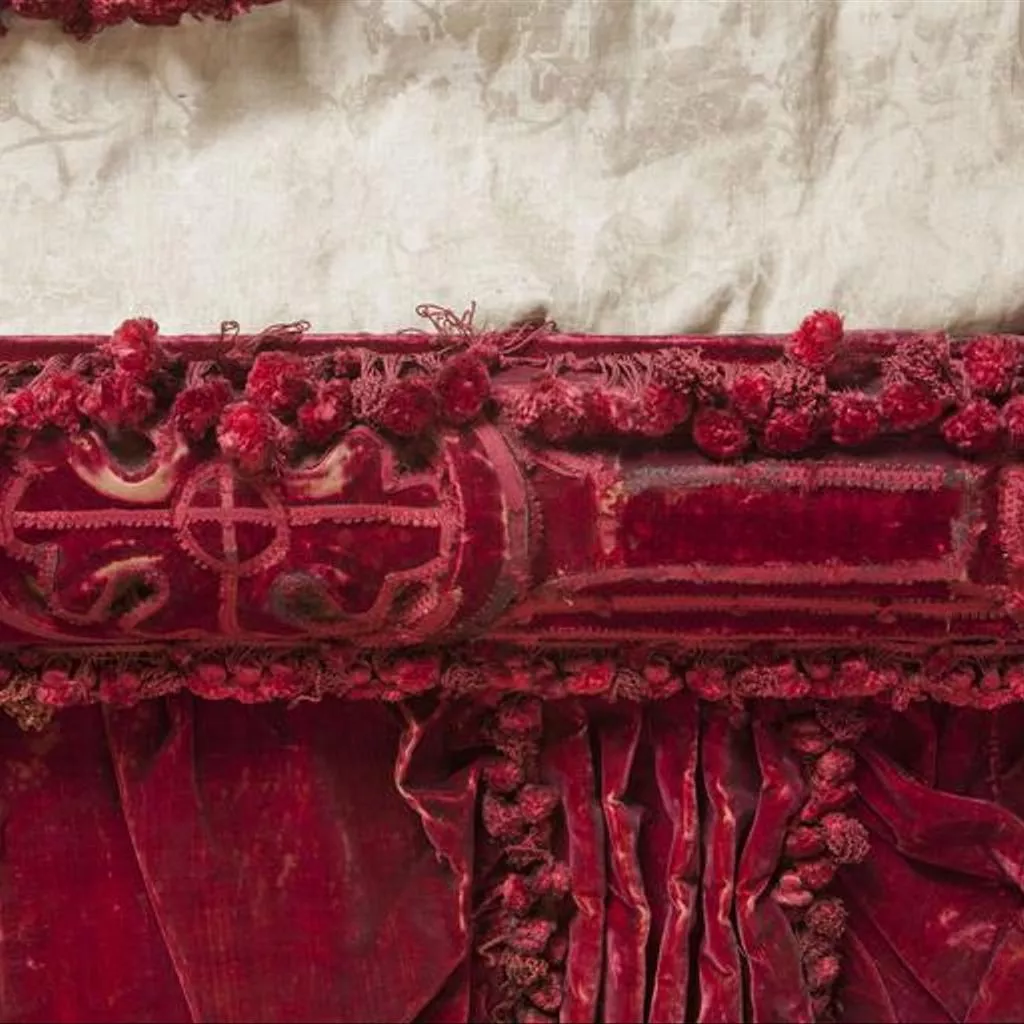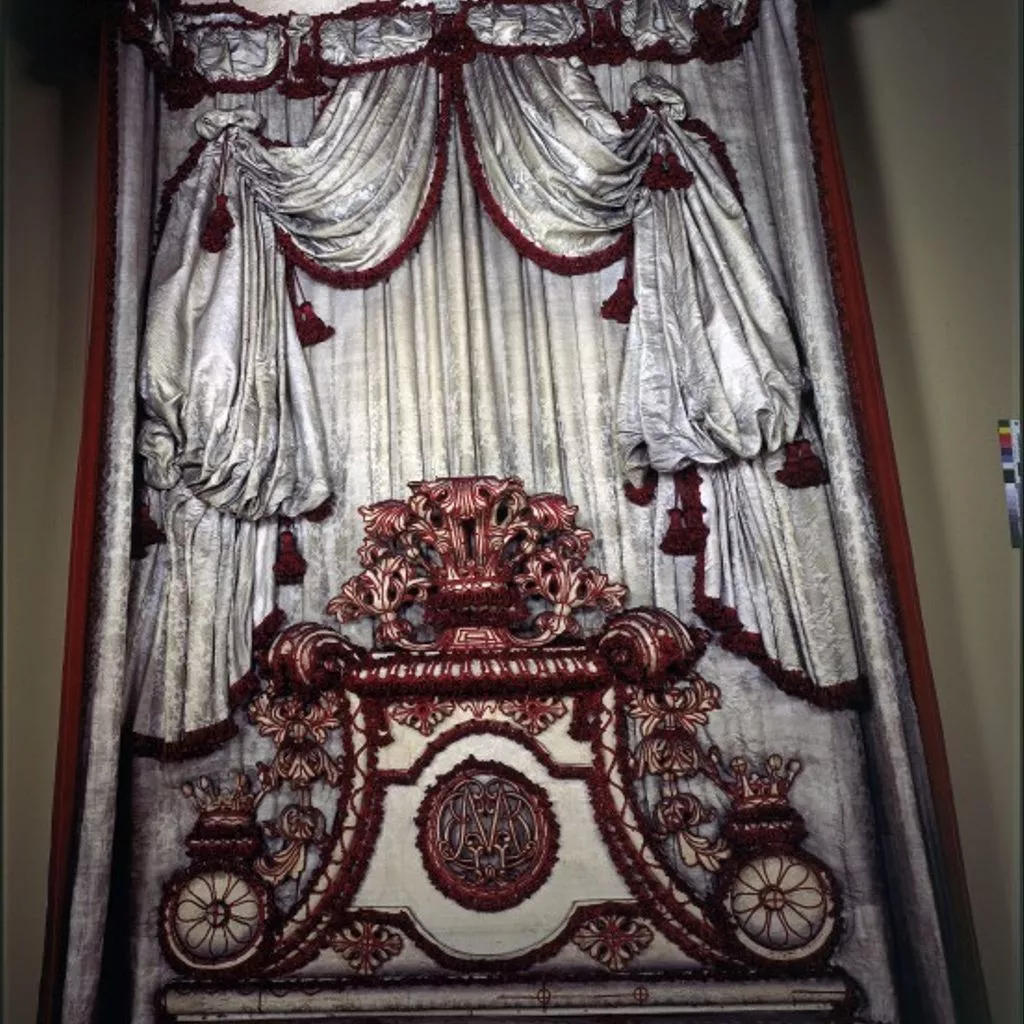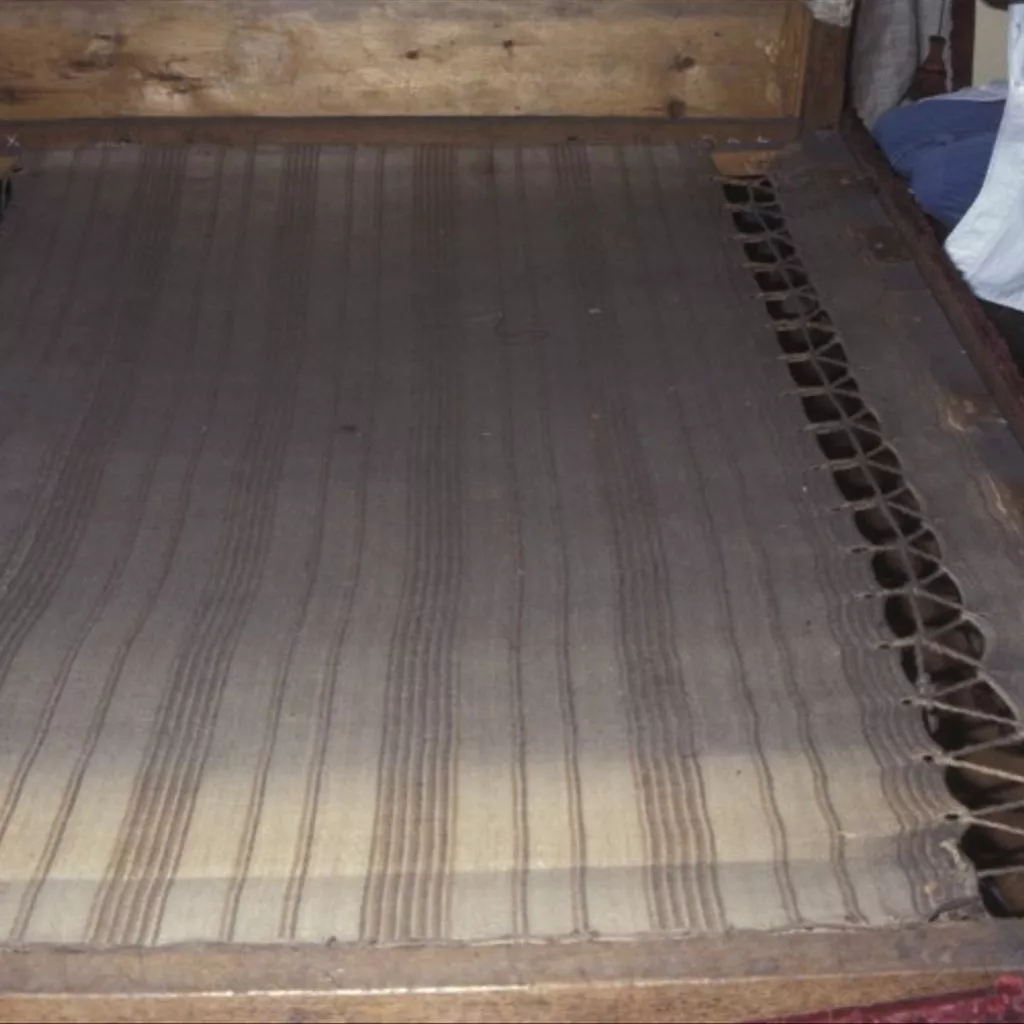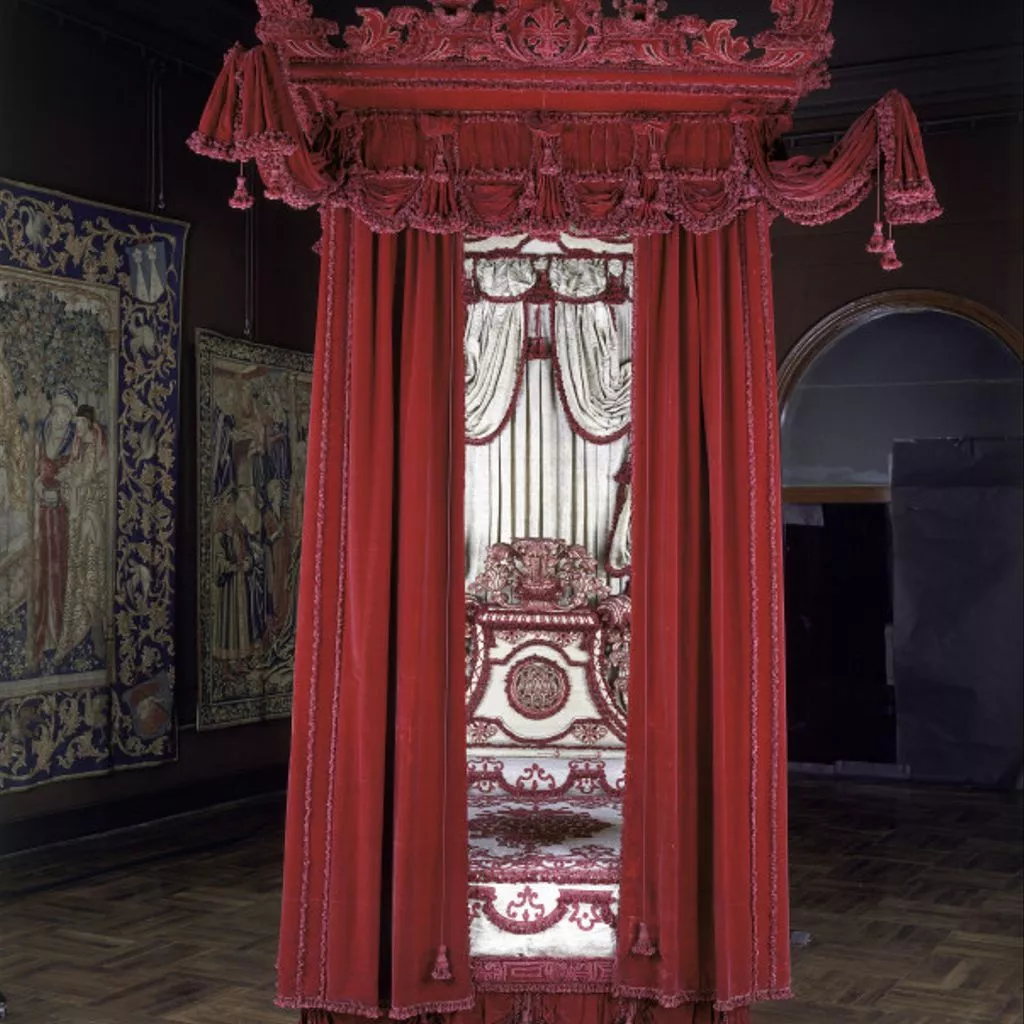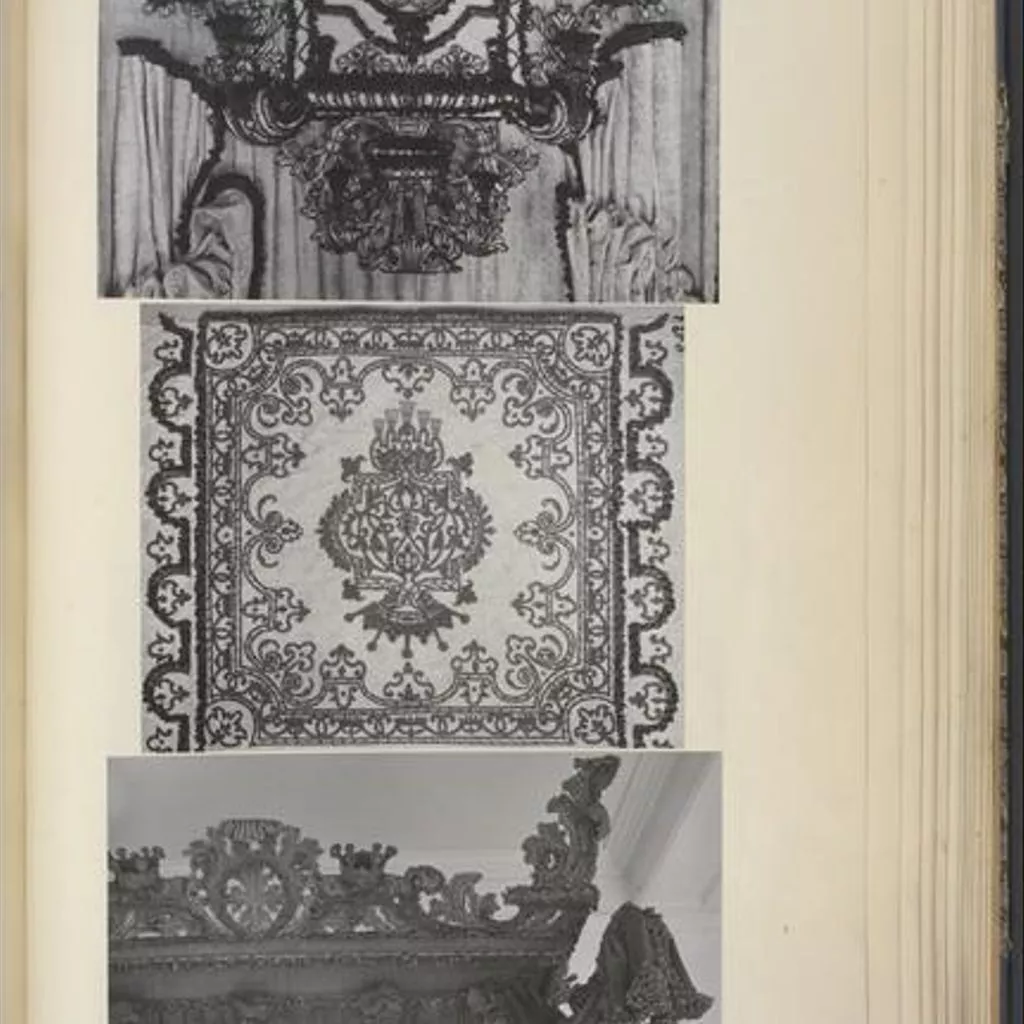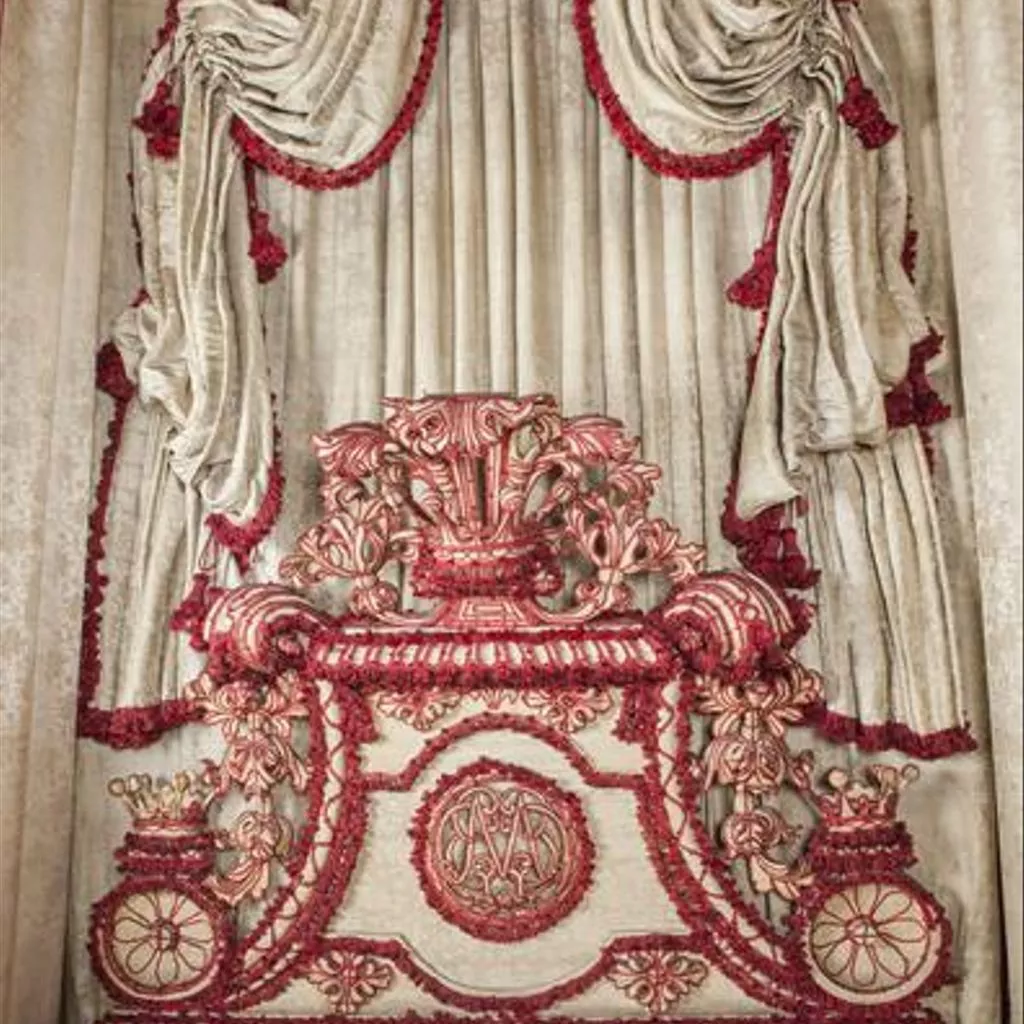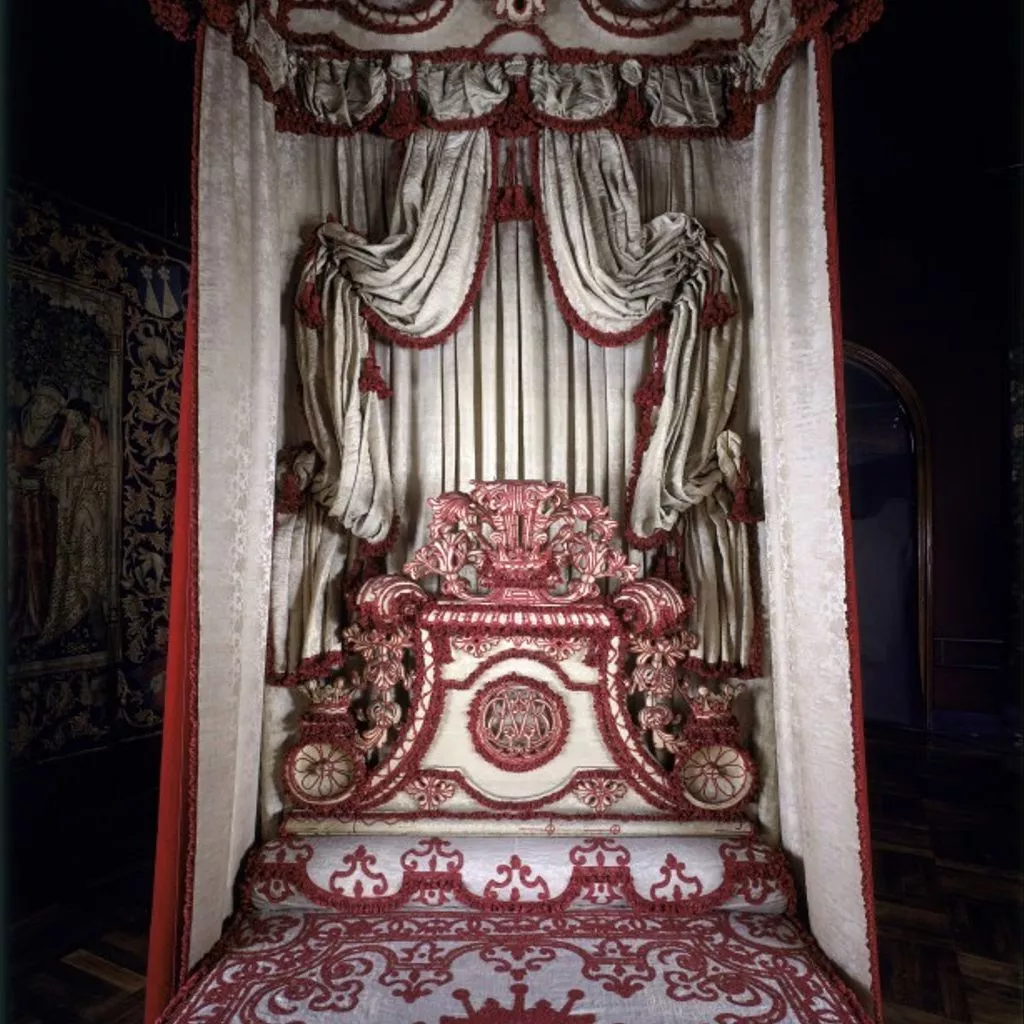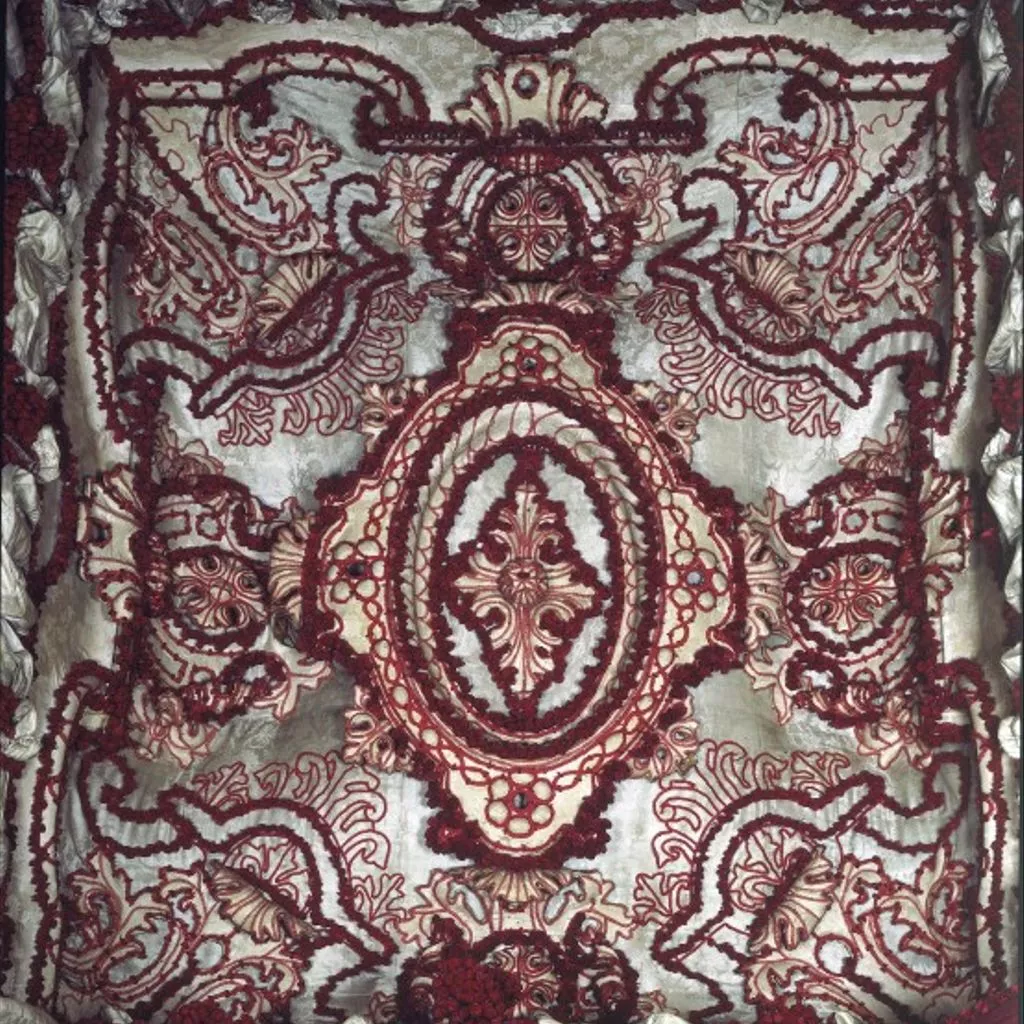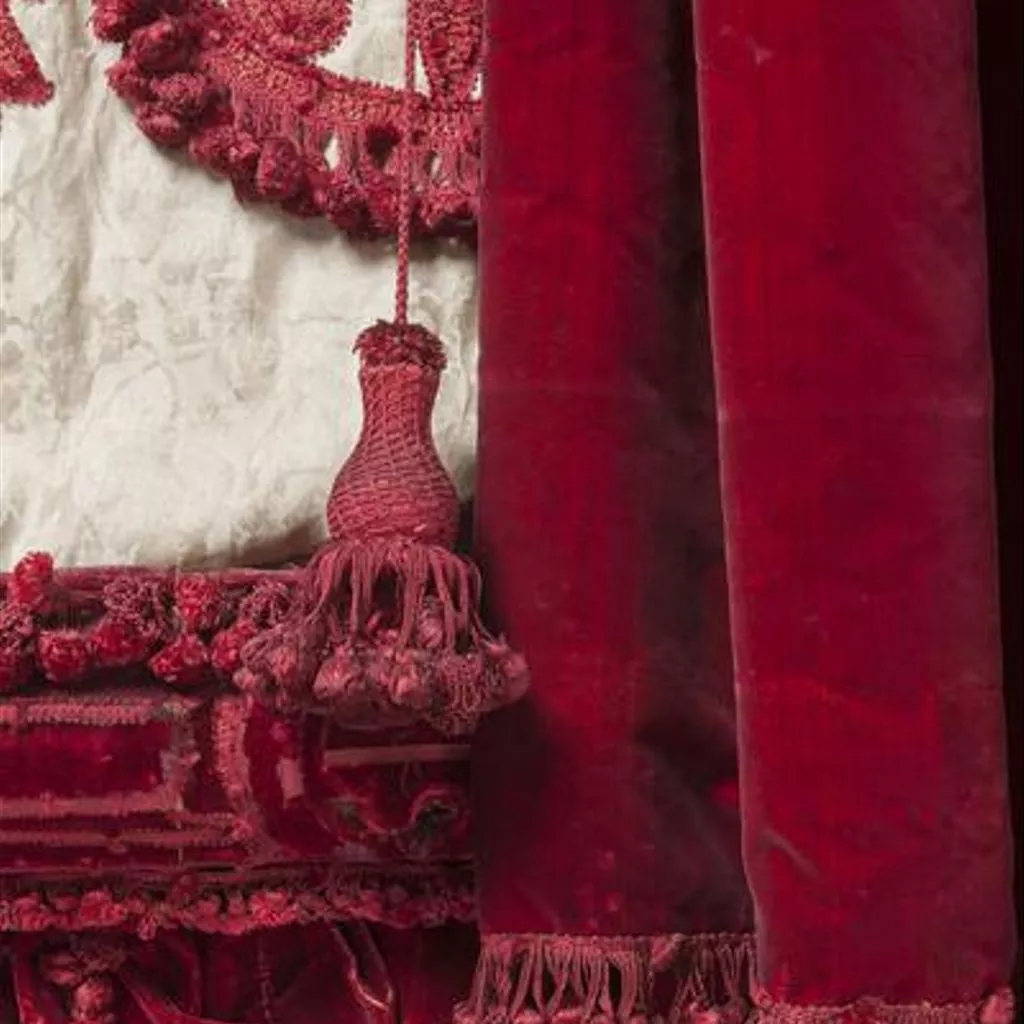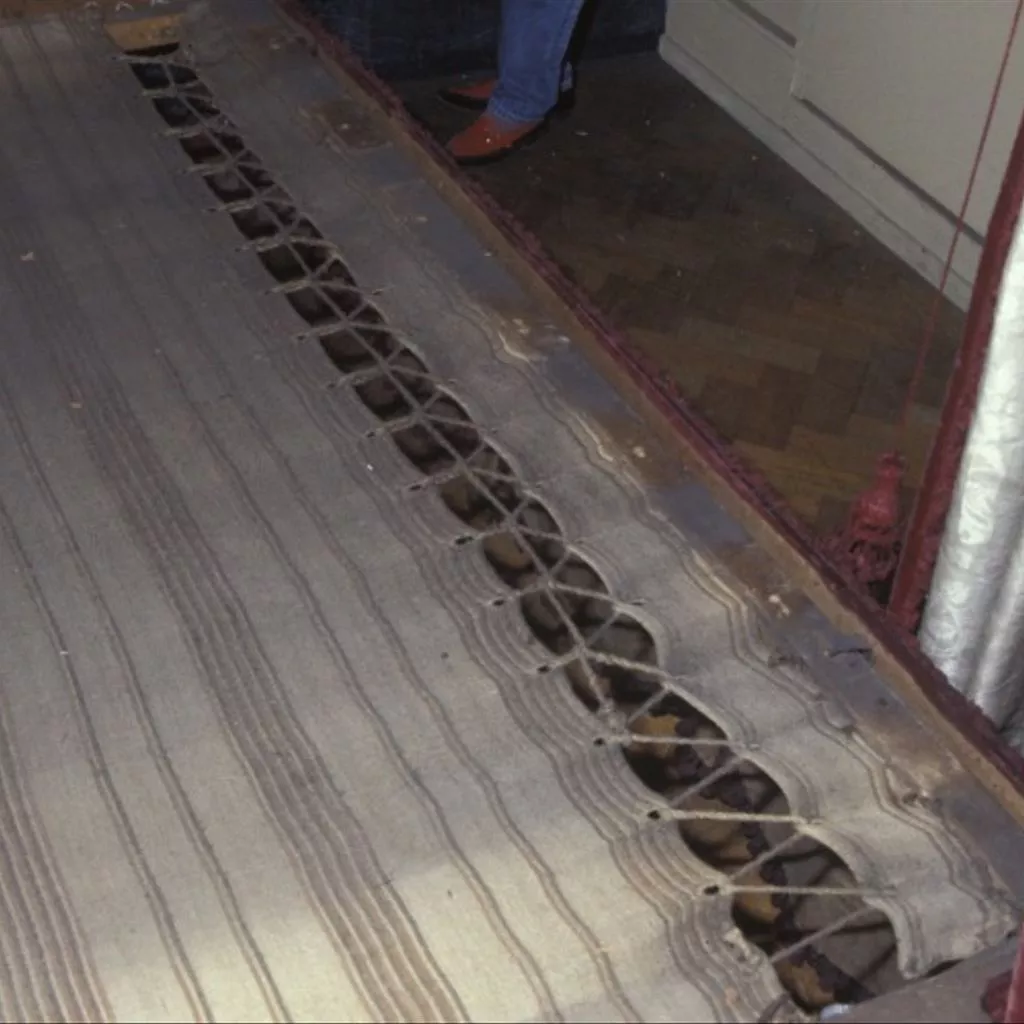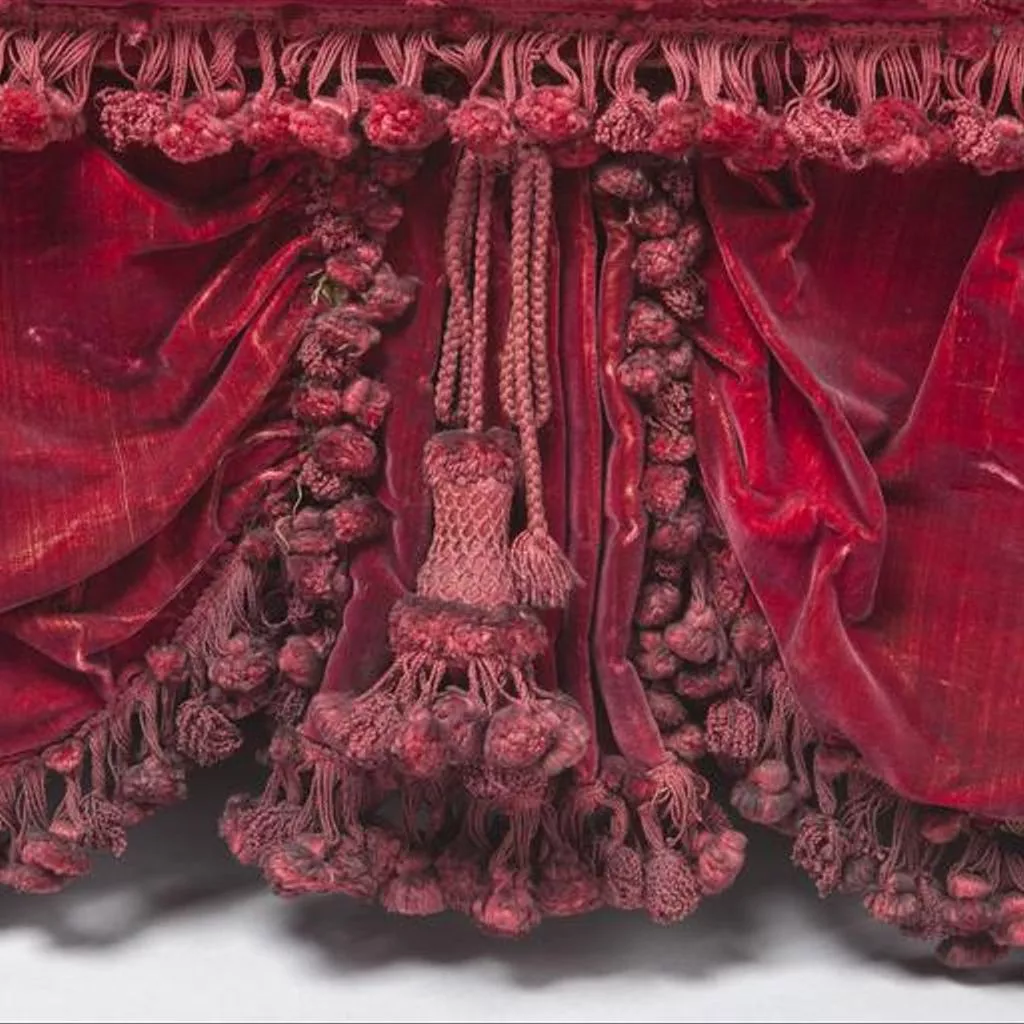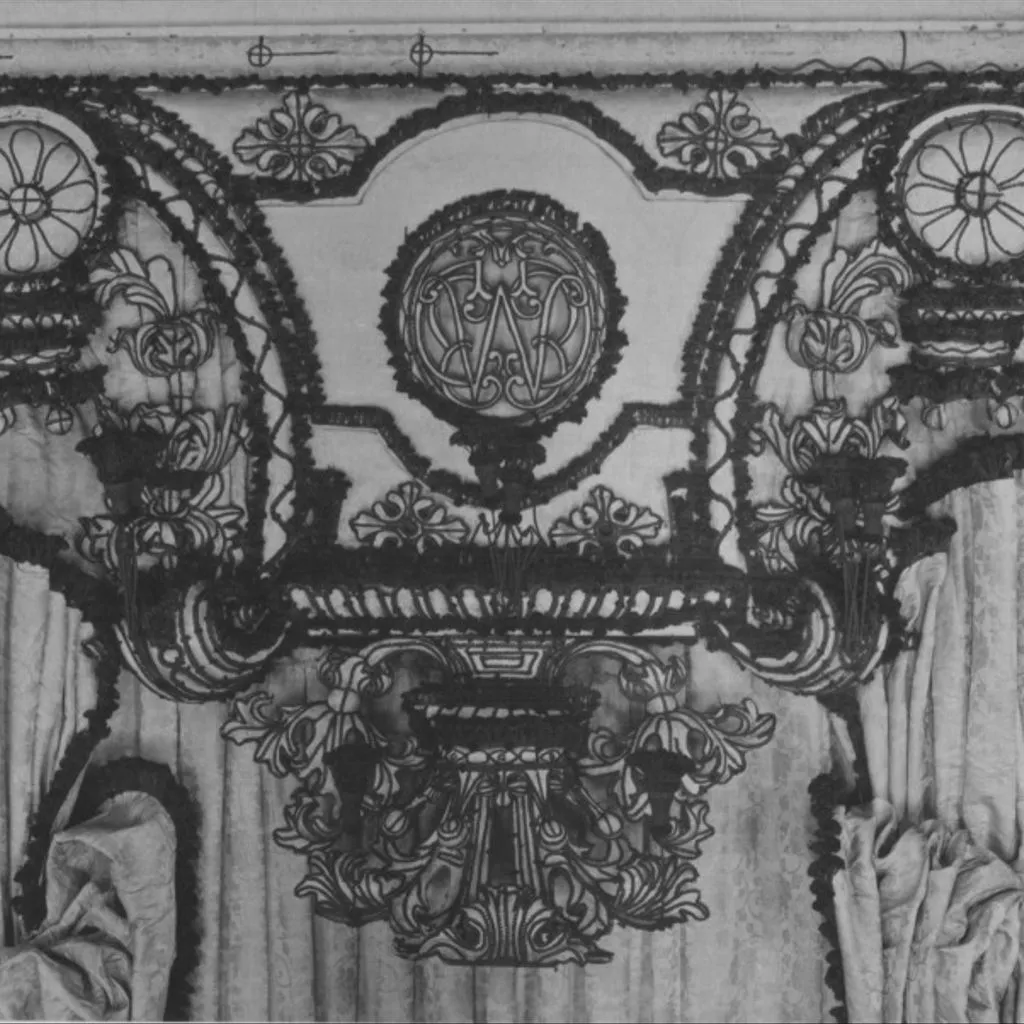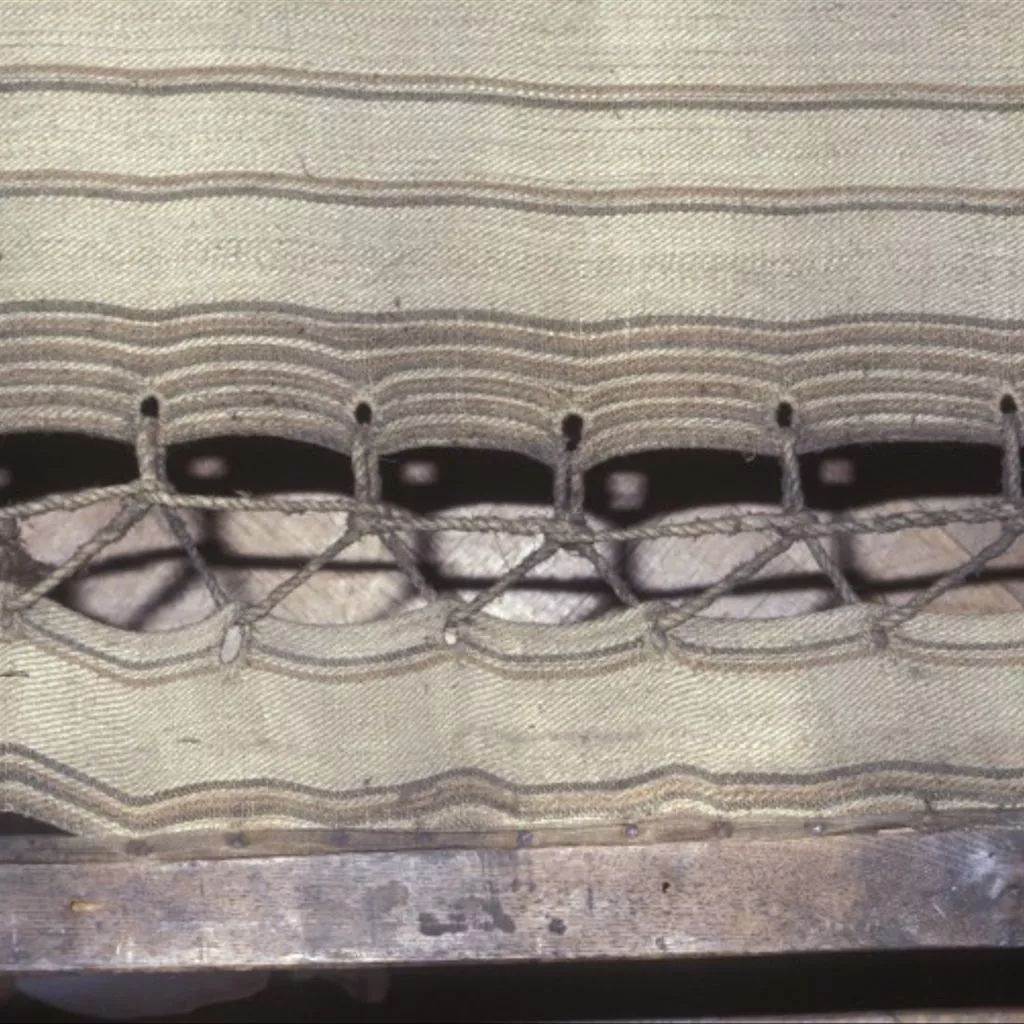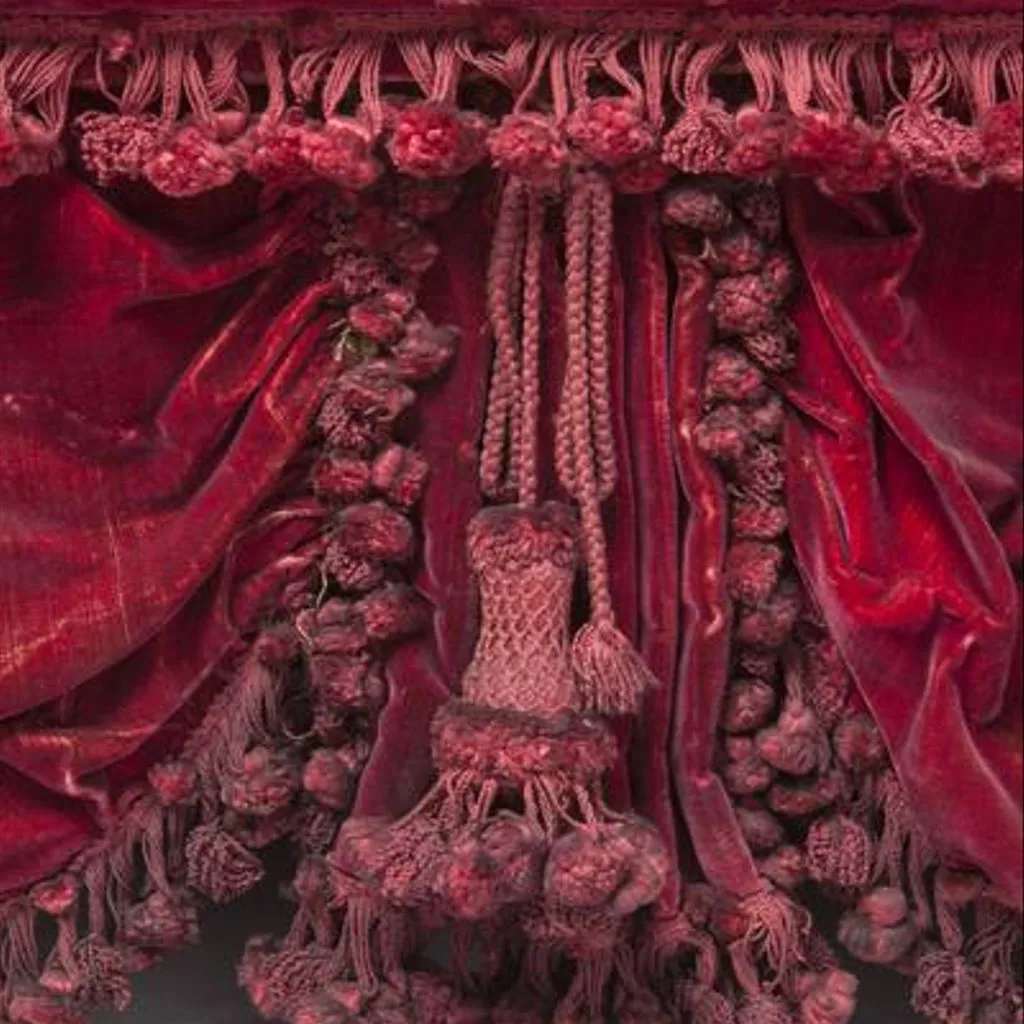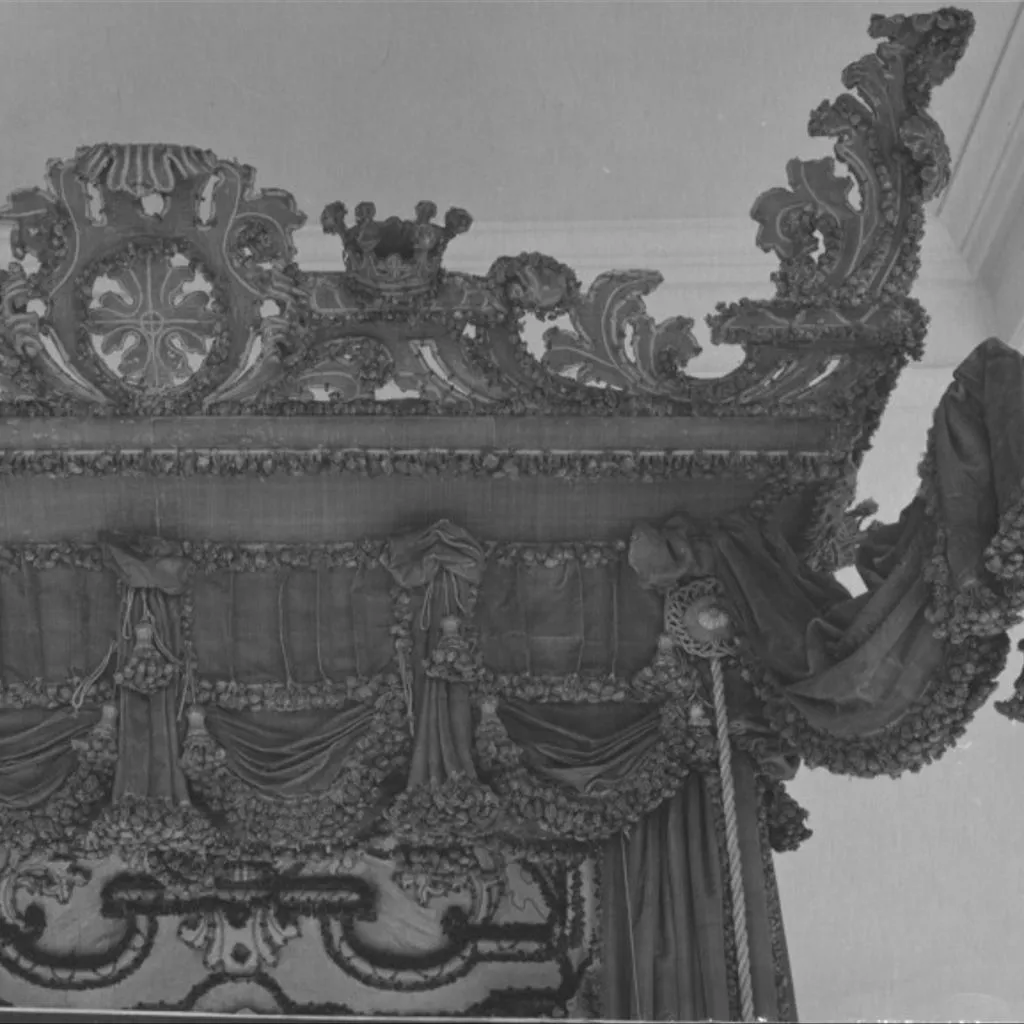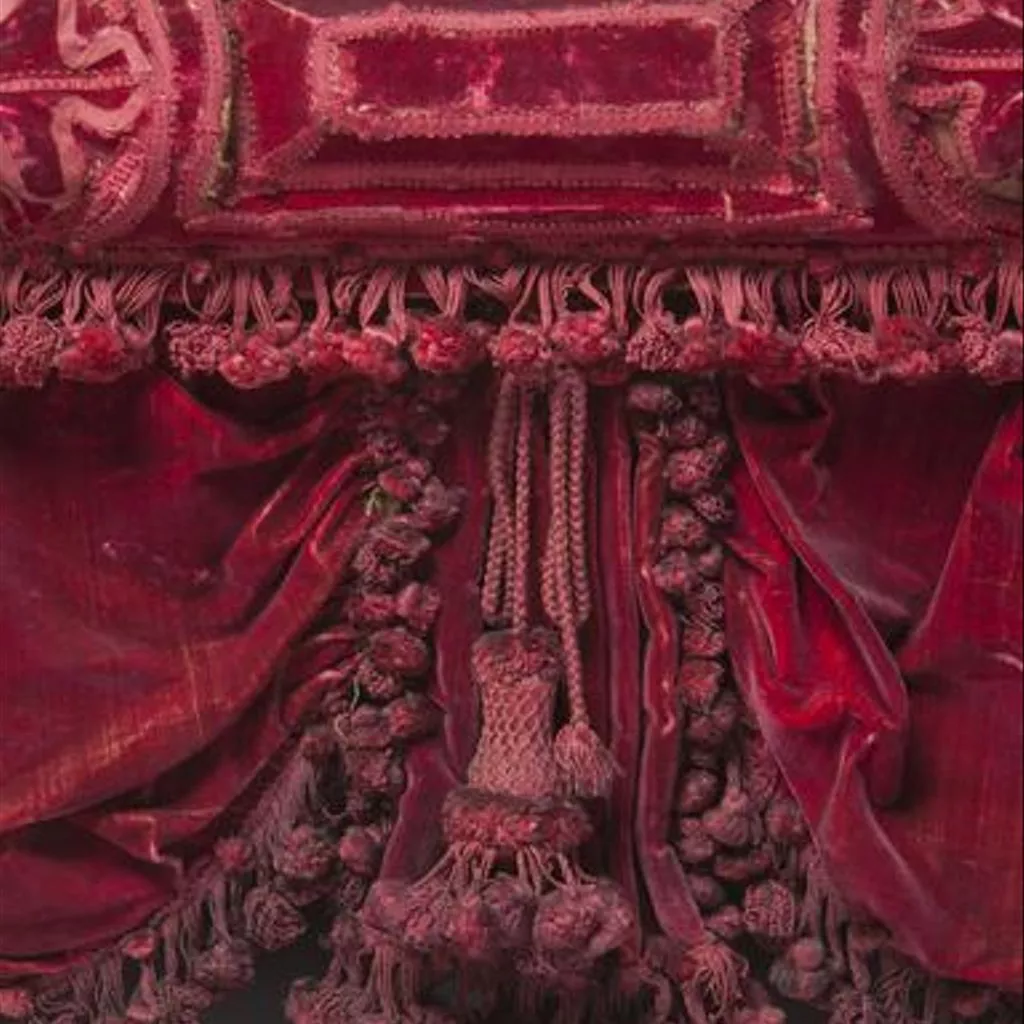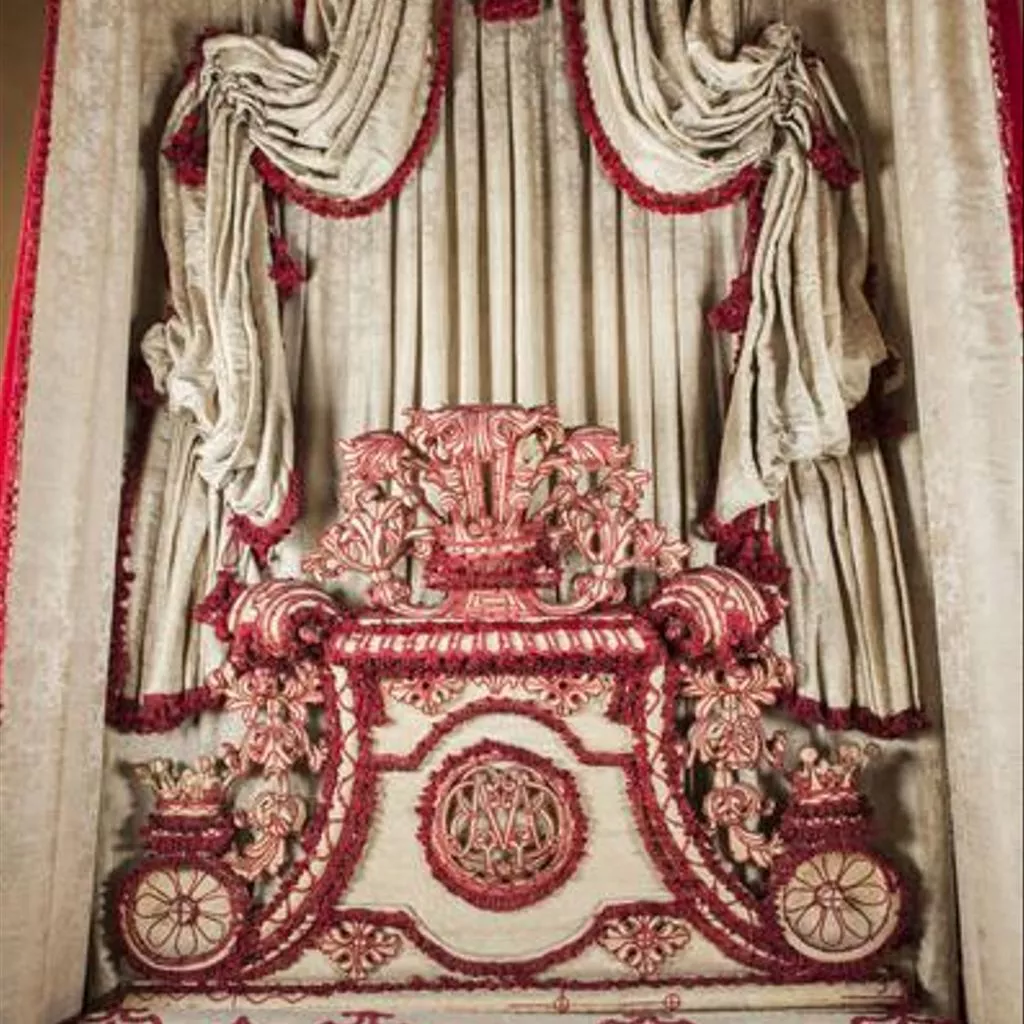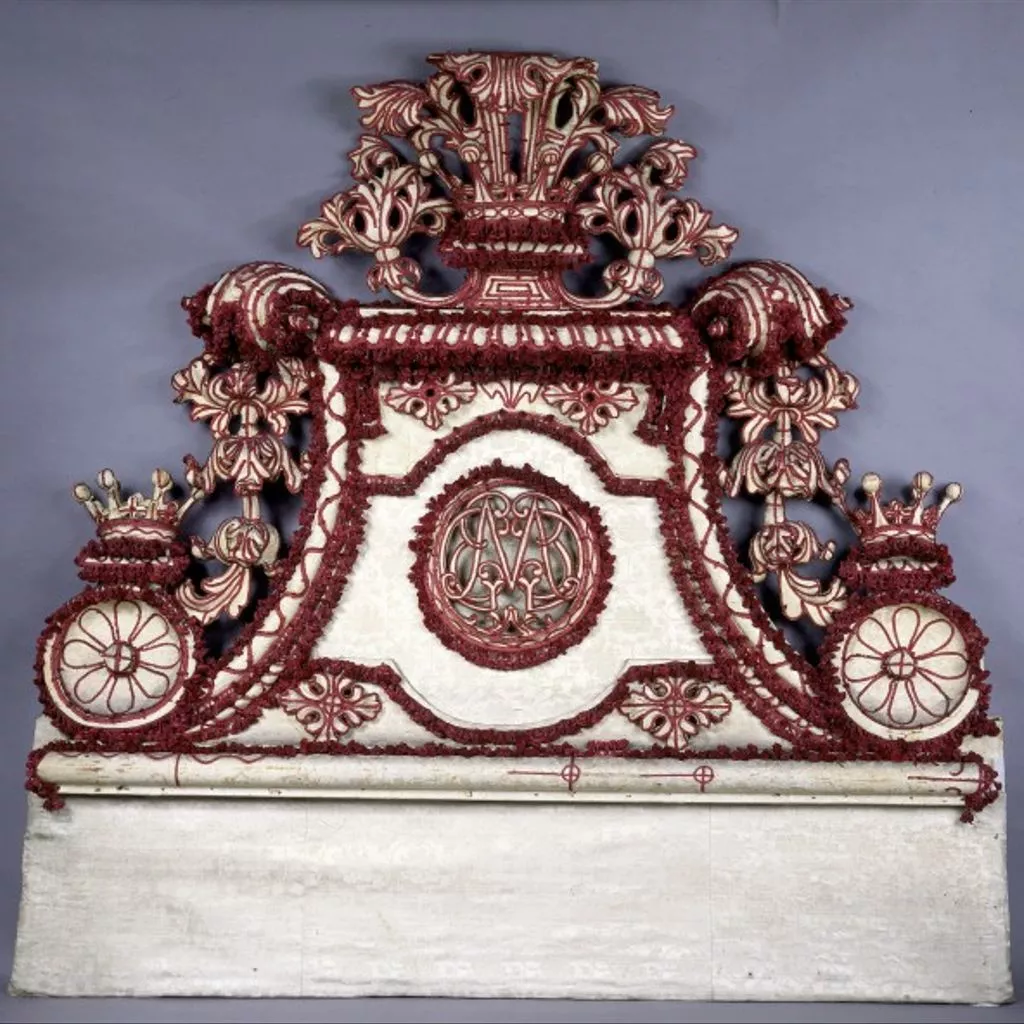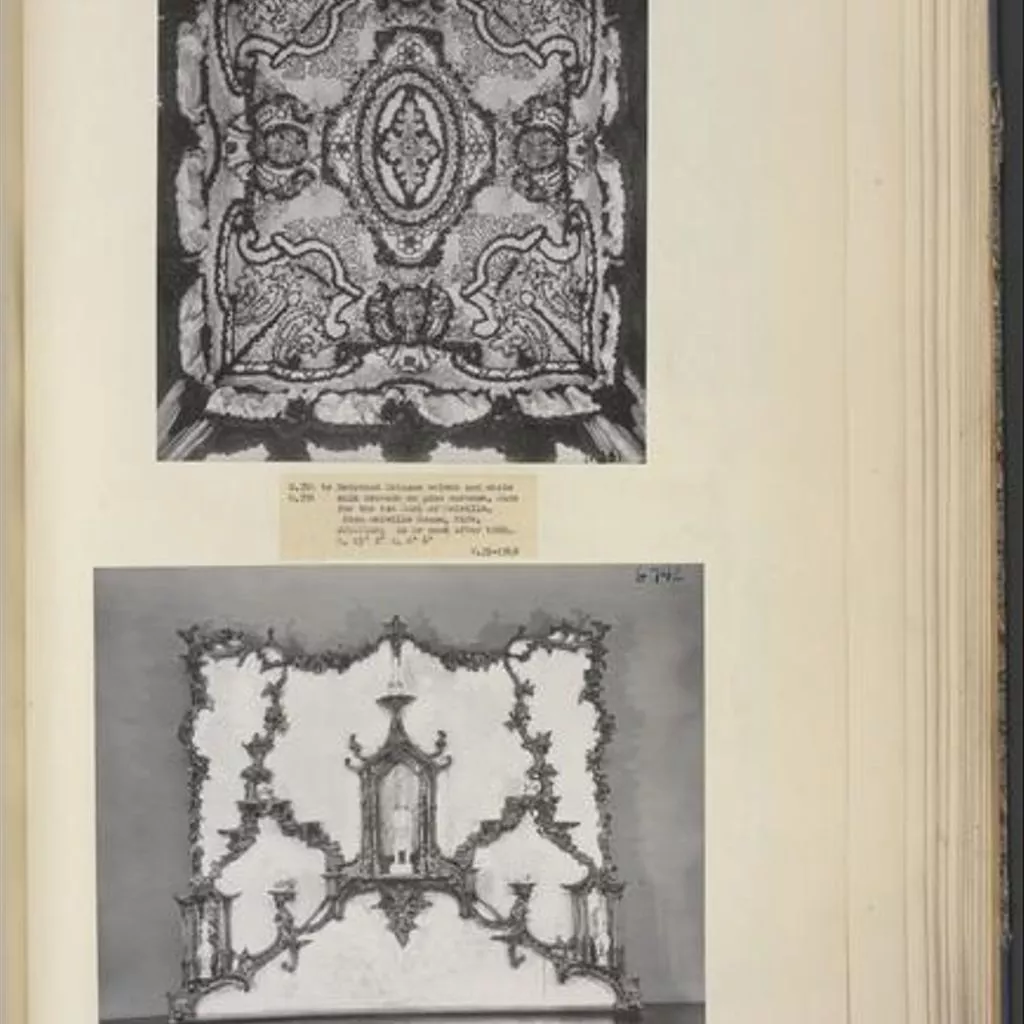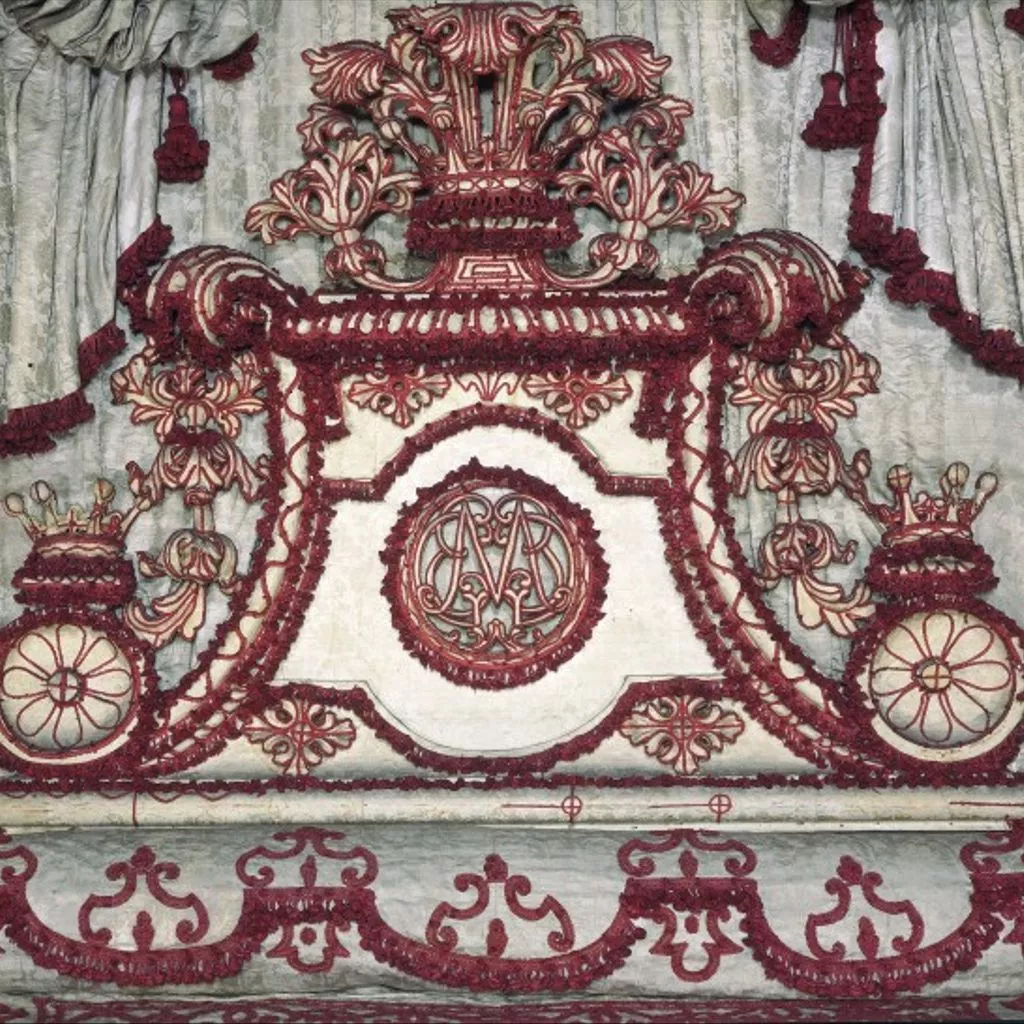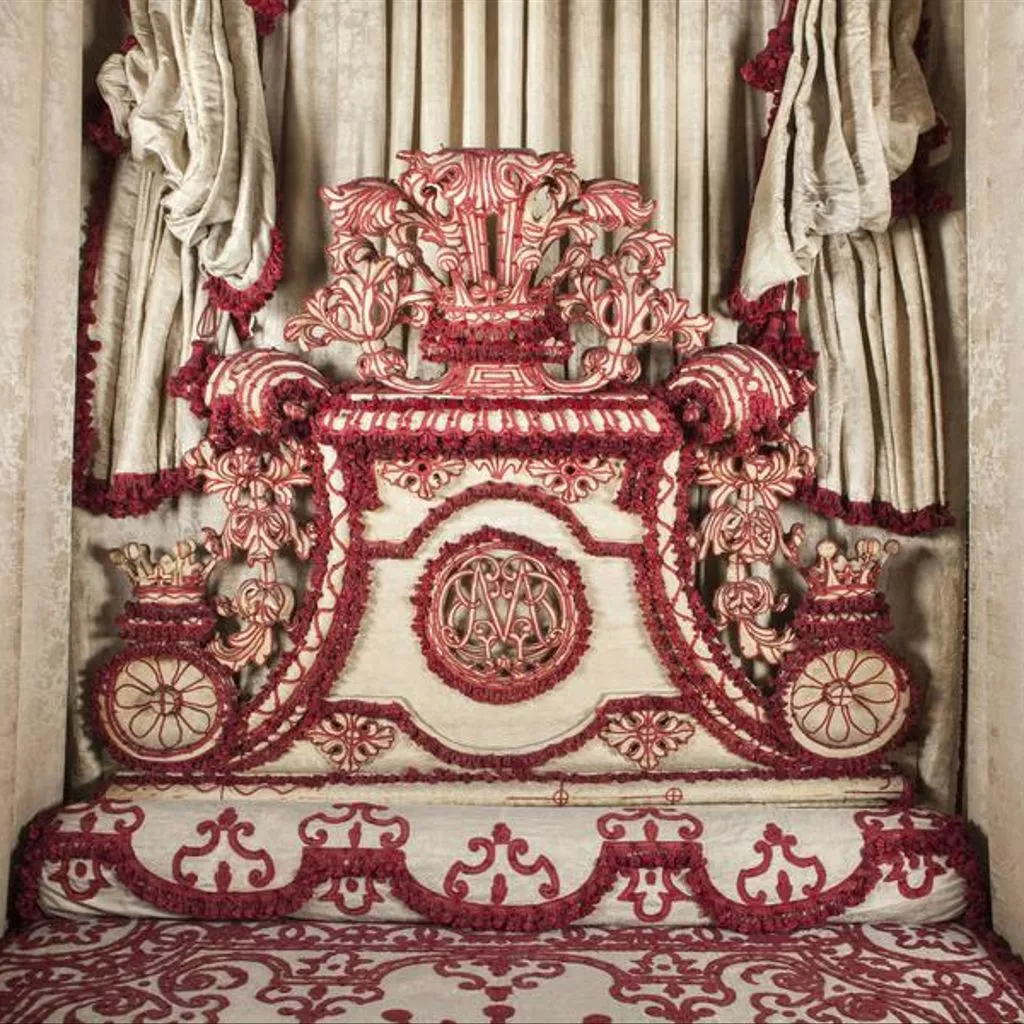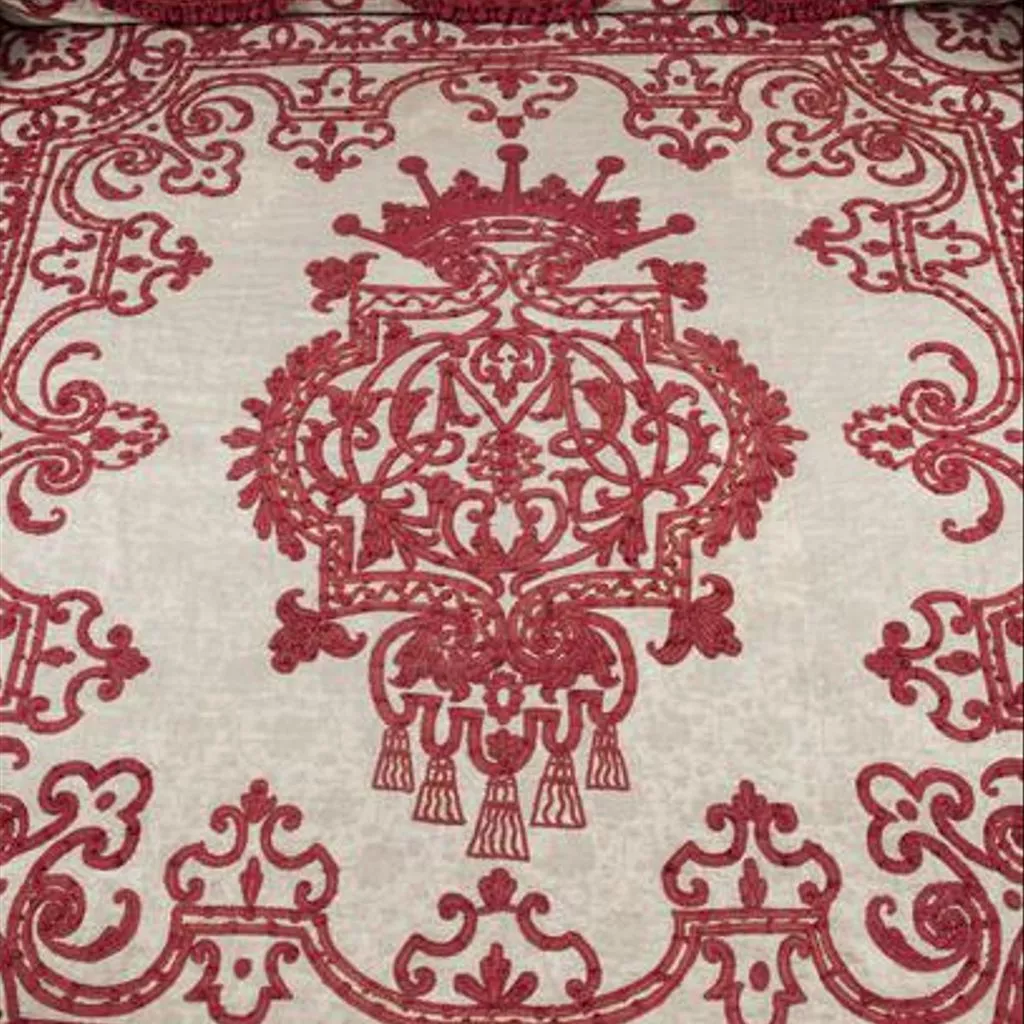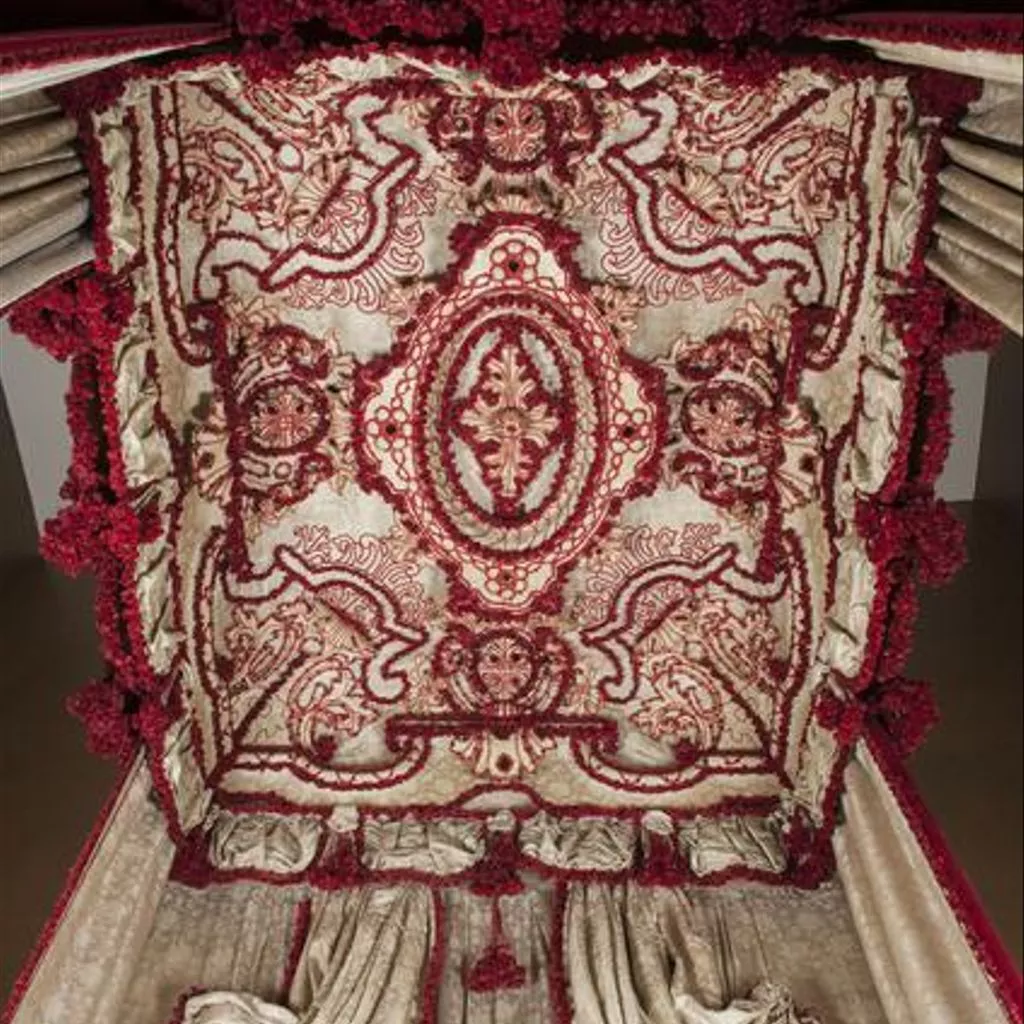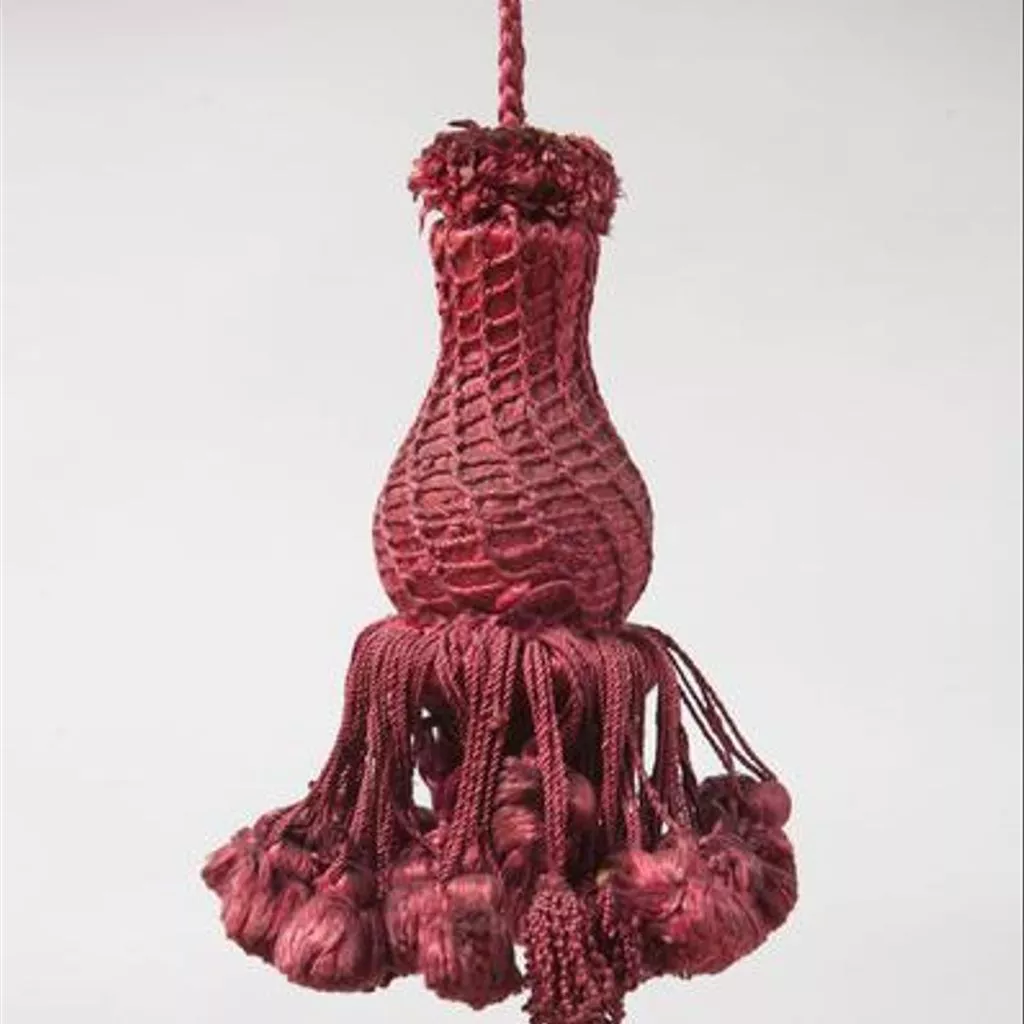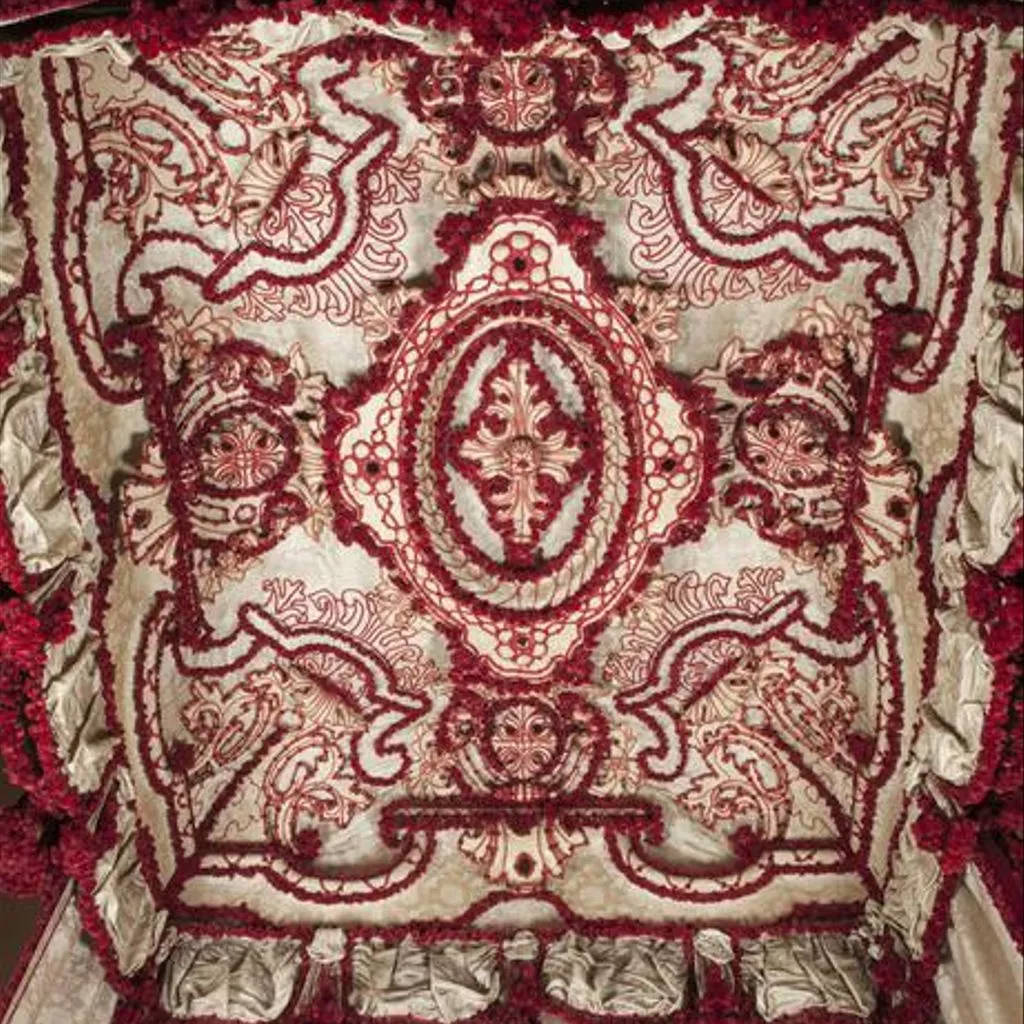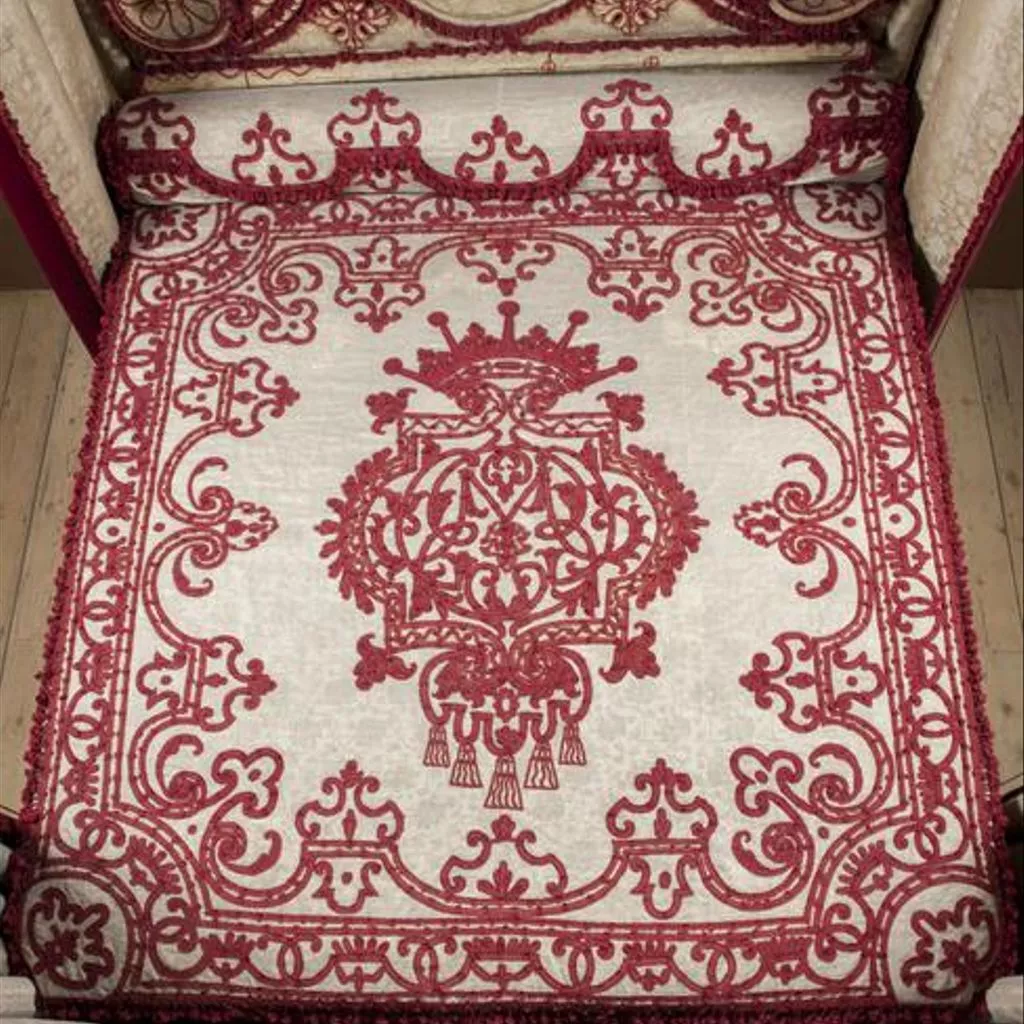1700~, London
1700~, London
- Identifier
- W.35:1 to 72-1949
- Acquisition
- Given by the Rt. Hon. the Earl of Melville
- Carried out by
- Marot, Daniel (http://data.silknow.org/activity/designer)
- Collection
- Material
- Technique
- Depiction
- Floral motif 50%

- Floral motif 51%

- Floral motif 67%

- Floral motif 69%

- Floral motif 42%

- Floral motif 77%

- Floral motif 55%

- Floral motif 53%

- Floral motif 44%

- Floral motif 55%

- Floral motif 38%

- Floral motif 46%

- Floral motif 48%

- Floral motif 58%

- Floral motif 54%

- Floral motif 57%

- Floral motif 63%

- Floral motif 68%

- Vegetal motif 47%

- Vegetal motif 69%

- Vegetal motif 65%

- Vegetal motif 58%

- Vegetal motif 65%

- Vegetal motif 63%

- Vegetal motif 51%

- Vegetal motif 49%

- Vegetal motif 57%

- Vegetal motif 47%

- Vegetal motif 49%

- Vegetal motif 63%

- Vegetal motif 41%

- Vegetal motif 55%

- Vegetal motif 56%

- Vegetal motif 56%

- Vegetal motif 42%

- Vegetal motif 48%

- Vegetal motif 39%

- Vegetal motif 74%

- Vegetal motif 49%

- Vegetal motif 54%

- Geometrical motif 55%

- Geometrical motif 64%

- Geometrical motif 51%

- Geometrical motif 53%

- Geometrical motif 63%

- Geometrical motif 61%

- Geometrical motif 43%

- Geometrical motif 67%

- Geometrical motif 53%

- Floral motif 50%
- Dimension
- 469 cm (height)265 cm (length)260 cm (width)
- Production time
- Production place
- Type of object
Description
State beds were usually made to accommodate the monarch and were lavishly upholstered in the most expensive fabrics and trimmings. During the reigns of Charles II (1660-1685) and James II (1685-1688) the most elaborate examples were imported from Paris. By the reign of William III (1688-1702), the most sophisticated beds were made in London using French immigrant upholsterers.
Materials & Makling
The bedstead consists of an oak bedstock (frame) with four oak posts secured to the rails with bolts. It retains its original ropes and linen ticking fabric to support the mattresses. The top of the posts hold iron spikes that secure the tester (upper horizontal section) and cornice. The coved interior of the tester is built up with facetted boards. The Chinese silk lining bears a Chinese inscription on the selvedge (finished edge of the fabric). Traces of pencil on the underside of the tester cloth provide guidelines for the application of braid and fringe. The curtains are made of joined widths of velvet.
Place
Melville House was designed by the Scottish architect James Smith (born about 1646, died 1729) in 1697 and completed in 1702. The State Bedroom on the principal floor of the house was approached from the Great Staircase, hung with family portraits, via the Big Dining Room and Drawing Room. STATE BED Pine carcase covered in Chinese white silk damask with details in crimson silk velvet (probably Italian) with a crimson fringe. The top crestings and corner finials are of cut pine covered with velvet. The cantoons or subsidiary curtains, are projected on curved iron supports. English between 1692 and 1707. Given by the Rt. Hon. the Earl of Leven. The bed was made for George Melville, (b.1636, d.1707) who was created Earl of Melville in 1690; his monogram, GM, repeated in reverse, occurs on both the coverlet and the head-board, below the Earl's coronets which are repeated on the top cresting. The bed came from Melville House, Fife designed in 1692. This magnificent bed, in a remarkably fine state of preservation, has strong claims to be regarded as the finest specimen of the period and is an excellent example of the influence of the designs of Daniel Marot. [1968] British Galleries: This bed was commissioned by George, 1st Earl of Melville, for his new house in Fife. He had spent many years in The Netherlands at the court of William of Orange, later William III, before returning to Scotland. His new house reflected his knowledge of the most recent European fashion in furnishings. The bed was never intended for everyday use but, een so, the survival of its original silk and velvet hangings is exceptioanlly rare. [27/03/2003] British Galleries label booklet: The State Bed from Melville House, Fife About 1700 [Photo: inside of tester or centre of coverlet] [Side 1 left-hand side- portrait of the 1st Earl] George, 1st Earl of Melville (1634-1707) The 1st Earl of Melville and Melville House George, 1st Earl of Melville (about 1634-1707), built Melville House to celebrate his family's return to favour in Scotland after a period of exile at the court of William of Orange in the Netherlands. Melville's great opportunity had come when he followed William and Mary to Britain after they became joint monarchs in 1689. He was appointed Secretary of State for Scotland in 1689, then created 1st Earl of Melville in 1690. As Lord Privy Seal (1691) and President of the Council (from 1696), Melville remained loyal to William at a time when the king's authority was unpopular with many in Scotland. Melville's decision to build a new house reflected his concern with his own status as one of the King's representatives. [133] The house was also an expression of family pride. Prominent on the headboard of the bed is the Earl's monogram. The bed may well have been ordered to celebrate the union in 1698 of the two earldoms, of Melville and of Leven. The Earl's younger son, David, had inherited the Earldom of Leven in 1681 through his mother. Following the unexpected death of his older brother, Alexander in 1698, David also became heir to the Earldom of Melville. [70] Elevation of Melville House by James Smith Melville House Melville House was built between 1697 and 1703 and stands surrounded by farmland, about 40 miles from Edinburgh. For the Earl of Melville it was an imposing statement of his wealth and political success, and a monument to family status. The house was designed by James Smith (about 1646-1729), one of the leading Scottish mason-architects, in the Palladian style, with a plain, symmetrical exterior. The ground floor contained rooms for daily living, including the Earl's bedroom, while the grandest rooms of 'state' or display stood on the first floor. [90] The state bedroom was the climax of a series of rooms fitted with the best oak panelling and marble fireplaces. The route for visitors to the house led from the great staircase, hung with family portraits, to a great panelled room for entertaining. From this an apartment led off on either side, each consisting of a drawing room, bedroom, dressing room and small private closet. The basement housed the kitchen and other services, while smaller rooms on the top floor were for other members of the household and servants. [87] Plan of the first floor showing the location of the State Bedroom [Map of part of Scotland, showing the location of Melville House] [Cut-away drawing of the house showing the position of the State Bedroom] The layout of the state rooms on the first floor of Melville House State beds Although state beds were commissioned to provide for the possibility of a visit from a monarch, their main function was for show and they were rarely used. They were the most elaborate item of furnishing in a set of state apartments and their sumptuous textiles and trimmings were famously expensive, reflecting the riches and power of the owner. The tester (or canopy) was itself an ancient symbol of authority, similar to the canopies that still traditionally hang above thrones. [80] State bedrooms were usually panelled in oak and often hung with tapestries. The upholstery of chairs and stools matched the hangings of the bed, while window curtains might be in lighter silk. Floors were not carpeted and to modern eyes would look bare. Pine floors were dry-scrubbed with sand to keep them light in colour. In the area of the bed itself the floor might be covered with strips of 'Portugal matting', a light rush-matting imported from North Africa. The taste for complex upholstered decoration for state beds came from the work of the French-born court designer Daniel Marot (1661-1752). His etchings of interiors and beds were published as collected sets from 1697 but Lord Melville would already have known the interiors that Marot had designed for William of Orange at his palaces in the Netherlands from 1686 onwards. It is possible that Marot designed this bed. [98] [Image of Marot design for a bed] The upholstery and his work Like most state beds in Britain, this one would have been designed and made in London. Although the upholsterer is unknown, one likely supplier was Francis Lapiere (1653-1714), who was born in France and probably trained in Paris. He settled in London before 1683 and supplied upholstery and beds for several of the grandest country houses. [66] The crimson velvet would have been imported from Italy, while the ivory white silk damask came from China. The trimmings would have been ordered from specialist makers, either in London or on the Continent. The upholsterer's team would also have supplied and installed the wooden frame, hemp cord, iron brackets and mattresses. The upholsterer himself might have gone to Scotland for such a prestigious commission. [76] The rich hangings conceal a plain oak frame. The three-dimensional ornament on the headboard and tester was created by gluing silk and braid onto a rigid, carved frame. Some of the most dramatic elements of the design were simply created by gathering the fabrics into festoons, pleats or large, loose rosettes known as choux. [72] The Melville bed [heading] About 1700 Unlike most surviving beds of this date, which have been stripped and covered with new silk at some time, the Melville bed retains all its original upholstery and hangings. The ivory silk even carries a weaver's mark in Chinese characters. Bedstock of oak; tester of pine; hangings of crimson Italian velvet with ivory Chinese silk linings, embroidered with crimson braid and fringe Possibly designed by Daniel Marot (born in Paris 1661, died in the Netherlands, 1752); probably upholstered in London by Francis Lapiere (born 1653, active in Britain from about 1683, died in London, 1714) Given by the Right Honourable the Earl of Leven Museum no. W.35-1949 The conservation of the Bed In the clean air of rural Scotland the bed had survived remarkably well, but the polluted air of London had taken its toll since the bed arrived at the V&A in 1949. In 1985 Museum staff started a programme of cleaning and conservation that was to last 10 years and involve 12 conservators. Over 4,500 hours of work were spent cleaning and repairing of the bed. Even after this work, it still could not be put on show, because the old British Galleries lacked any form of air-conditioning and the dirt would have gathered again. Now it is possible once again to show the bed, though even in air-conditioned galleries it must be cased to preserve its fine condition for later generations. [106] [Image of bed in situ at Melville House] The bed at Melville House [22/1/2001] The State Bed from Melville House, Fife, Scotland. Oak and pine upholstered in crimson Genoa velvet and white Chinese silk damask embroidered with crimson silk braid, English, c.1700 The bed was listed as in the State Bedroom at Melville House in 1837 ( Inventory of Melville House, Fife, 1837, from the Marquis of Ailsa's papers, Scottish Record Office, Edinburgh GD25/9/31/3A). Melville House was designed by the Scottish architect James Smith (c.1646-1729), it was begun in 1697 and the final masonry work and roof only completed in the summer of 1699. It would have been furnished in the next year, and the family papers record that Lord Melville was buying tapestries in London from September to December 1700. There are no surviving bills for the State Bed. The West facing State Bedroom was on the Principal Floor of Melville House, and the State Bed was intended as a symbol of Lord Melville's authority. The State Bedroom formed the climax of a series of State Apartments approached from the Great Staircase to the North of the house, which was hung with family portraits including those of the 1st Earl and Countess of Melville by Sir John Baptist Medina. The Great Staircase led on the Principal Floor to the South facing Big Dining Room which at the time of George Melville's death was hung with four tapestries and furnished with a scrutoir (desk), a painted screen, a dozen turkey-work chairs and two tables, one oval and one square. A Drawing Room led from the Big Dining Room to the State Bedchamber. The latter was serviced by a Dressing Room, Closet and Back Stairs. The State Bedchamber opened directly into an Antichamber which in turn led to the Great Staircase Landing. The sequence of rooms is derived from a plan of the Principal and Vestibule Floors of Melville House which was drawn in 1733 to accompany an account of the lightening which struck Melville House during a storm on 27th October 1733 (Melville Papers, Scottish Record Office, GD 26/13/272). There is no detailed description of the other contents of the State Bedroom, but there is no evidence in the family papers that this room was used during the 18th century. It was created in order to receive the monarch,William III. But King William never visited Scotland. By 1733, George Melville's eldest son, David, 2nd Earl of Melville and 3rd Earl of Leven occupied 'My Lord's Bedchamber' directly below the State Bedchamber on the Vestibule floor. In 1707 the earl's bedroom had been furnished with 'a dark colour mohair bed with a blue casnet (sarsnet) lineing/embroidered and a covering of /that same, a guilded cornice/ and feet conforme' the hangings more practical for everyday use that those on the State Bed. The other furniture included two tapestry hangings, an agate cabinet, a walnut cabinet with a table, pair of candlestands and mirror en suite, an easy chair, six cane chairs, a cabinet for holding papers and a little writing table'. The Country Life photograph of the bedroom shows mid-eighteenth century chairs, covered in matching velvet. There is no evidence that the State Bed was originally accompanied by upholstered chairs en suite as shown in contemporary designs by Daniel Marot.



